
























DRAWINGS. Community members drew
and


























DRAWINGS. Community members drew
and
Two killed, 18 injured, a state traumatized, families distraught and once more a nation struck by the horrors of gun violence. Aug. 27 was filled with terror as the news of the Annunciation Catholic School and Church shooting spread fast. Whether or not there was a personal connection, the events affected many, especially the Minnesota educational community.
“What happened is just a nightmare for any parent and educator,” middle school principal Virginia Andres said.
For many, the shooting was not just a wakeup call, but a push for systemic change.
Like other schools in the Twin Cities, St. Paul Academy and Summit School responded to this tragedy quickly.
First, Randolph campus administrators met to discuss a plan to help students and faculty feel physically and mentally safe. In addition, Head of School Luis Ottley and upper school Principal Minnie Lee held an assembly. School counselors Jake Turnbloom, Clare Roney and Steve
Van Driest also made an appearance on stage, letting students know that they were available to support those in need.
Often it feels like all this bad stuff is happening, but nobody is doing anything ... this made me feel like we actually can do something. “

“When we met as a team, our goal that day was to think about how we hold space for students who may have connections, who may have had past experiences or who are just feeling scared,” Roney said.
Within hours of the assembly, a letter sent to parents discussed safety precautions, student resources and temporarily increased security measures provided by the St. Paul Police Department.
“There is no indication of risk to our SPA campuses at this time,”
Ottley wrote. “Our security and safety protocols remain in place, and events like this always lead to increased vigilance, including increased perimeter monitoring and circulation from our security staff.”
John Cole, director of operations and security, provided insight on the school’s regular actions to prevent acts of violence.
“When you look at the process that someone might go through to get to a point where they feel like their only option is to do what happened at Annunciation, along that process are multiple places where we can step in and impede that,” he said.
Cole believes that SPA does a good job of making connections between community members, whether that be “at the front door where you just say hi every morning, or it’s a counselor, or a teacher or anyone who’s a trusted adult in your life,” Cole said.
He believes these connections will prompt students to seek help before turning to things such as violence. Still, Cole said he thinks about threats to campus security “every day.”
The school’s response to the Annunciation shooting didn’t stop with faculty and staff, but grew as students turned their feelings into positive actions to support the Minneapolis school and its community. Students participated in walkouts, signed a poster in honor of Annunciation and attended vigils.
At noon Sept. 5, SPA students left school and congregated at Cretin-Derham Hall to take part in a nationwide walkout organized by Students Demand Action. From there, the group marched to Highland Park Senior High, accumulating students along the way. They walked in unison, with signs held high and chants called out, such as “stop this silence, end gun violence.”
Junior Soren Zuehlke reflected on his participation in the walkout. “Often it feels like all this bad stuff is happening, but nobody is doing anything about it, and nothing is happening, but this made me feel like we actually can do something, and that feeling was super cool,” he said.
Additionally, a poster of support was crafted
and signed by the student body and given to Annunciation Catholic Church. The poster was placed in the hallway outside on the first floor of the library. Students, faculty and staff left written notes of support on the poster until it filled.
Although there have been other school shootings in Minnesota and across the nation, the Annunciation shooting was eye-opening to many. The educational community, struck with shock and trauma, is only starting the process of grief and healing.
COUNSELING: The counselors open their doors to students grappling with all emotions, inviting anyone to their offices to talk through their grievances. Clare Roney, Steve Van Dreist and Jake Turnbloom’s offices are all located on the fourth floor.
WALKOUTS: A number of student-organized walkouts have been coordinated. Consider attending a walkout, making a sign and preparing a speech. Check the handbook for policies surrounding protests/walkouts.
ASK FOR CHANGE: Contact your local legislator or government official and petition for a change in policy. Reach out at the Minnesota legislature website.
SELF CARE: Take a moment for yourself, reach out to your friends and family and engage in conversation. You’re not alone. If you need further support, text CONVO to 741741 or call 988 for free, confidential 24/7 support.
Scan this QR code to read more about the Sept. 3 walkout at Gold Medal Park at RubicOnline.
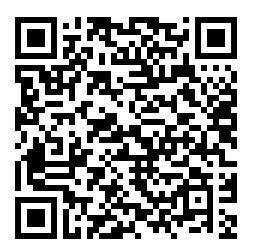
“I remember my freshman year, and I was really lost in having my mentor help me out for things like finals week,” she said.
The mentor-mentee program strives to make the high school a welcoming place for all new students. Through traditions like senior/kindergartner pumpkin carving and the mentor-mentee program, the school encourages relationships between students regardless of grade.

In the past, juniors and seniors have volunteered to mentor incoming ninth-graders and new older students. Last year, the program paired one or two seniors and juniors with a group of three or four ninth-graders to help them navigate high school: homecoming, finals and academic skills like how to use tutorials productively.
This year, the mentor-mentee program has shifted to only include new students, regardless of grade level, to focus on more one-on-one interaction.
This is senior Maren Overgaard’s second year as a student mentor. “It’s nice to be that kind of a spokesperson,” Overgaard said. “It’s nice to meet the new students and really get to know them, especially after being at SPA for such a long time.”
In this way, the mentor-mentee program aims to foster connections between old and new students.
Junior mentor Sofia Rivera described why being a part of the mentor-mentee program stood out to her.
While the format has changed since Rivera was a ninth-grader two years ago, the new program seems helpful to her as well. “I do think that focusing on new students is a really good idea,” she said.
The updated program allows for new students to ask questions and to connect with leaders in the school community.
Ninth-grader Grace Berger is new to the school, and although she hasn’t had a lot of time to meet with her mentor, the program feels helpful to her.
“It was definitely nice at the start ... I think the mentor program is a good idea,” Berger said.
While the year is just beginning and partners haven’t had many opportunities to meet, the program’s goal is to build a welcoming environment for new students.
Even though the mentor-mentee program has experienced organizational changes, the connections it aims to build between students is still the same. The next meetings will be scheduled by the pairings based on interest and need.
ratio of mentors to mentees 1:1
5
number of mentees who are not in ninth grade
4
number of mentor-mentee meetings this semester, discussing the schedule, traditions and finals week
Twin Cities Partnership College Fair allows students to personally connect with admissions officers
With college looming for seniors and the search just beginning for many younger students, college fairs are everywhere. Breck School will host one such event Oct. 5, featuring over 100 representatives from universities around the country. Approximately 650 students typically attend, hailing from various locations across the Twin Cities and greater Minnesota. The fair will run from 1 to 3 p.m.
SPA observes Yom Kippur with day off
School will close Oct. 2 in observation of the Jewish holiday Yom Kippur. The end of the Jewish New Year, Rosh Hashanah, marks the beginning of the “10 Days of Awe,” a time for self-reflection; Yom Kippur finishes the period. The holiday is often celebrated with prayers and synagogue services as well as an approximately 25-hour fast.
INFOGRAPHIC: Ivy Evans INFORMATION: Twin Cities Partnership, Chabad
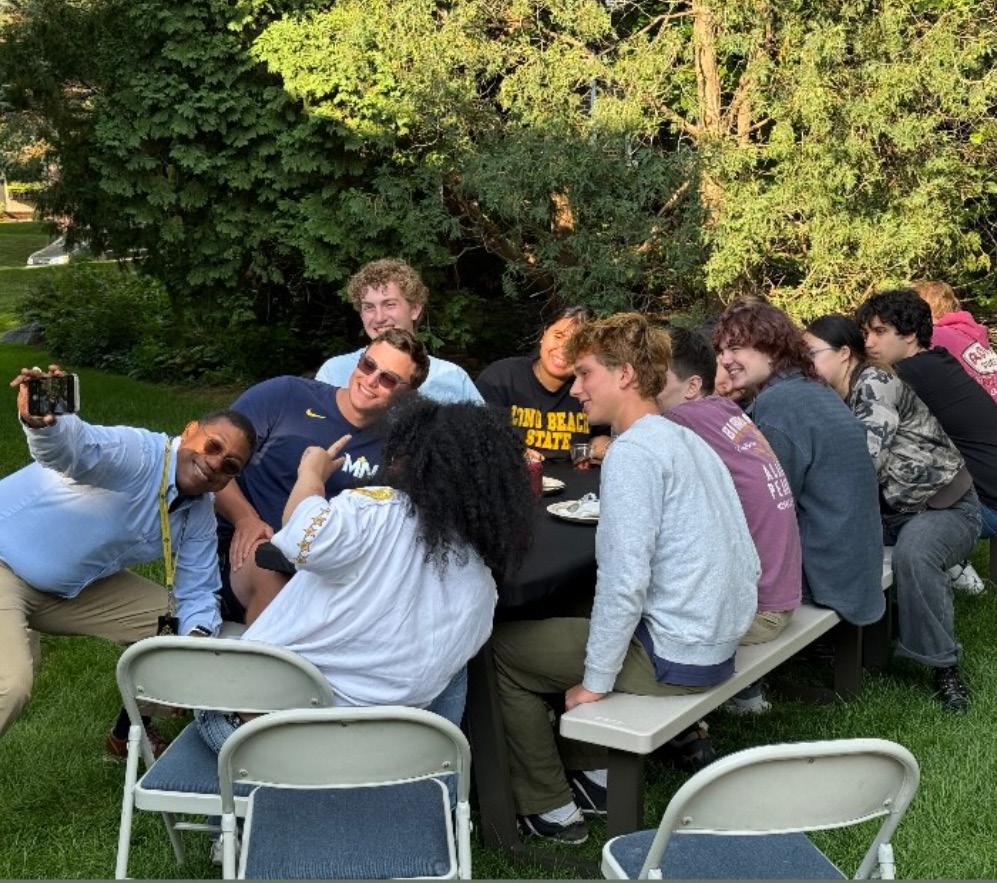
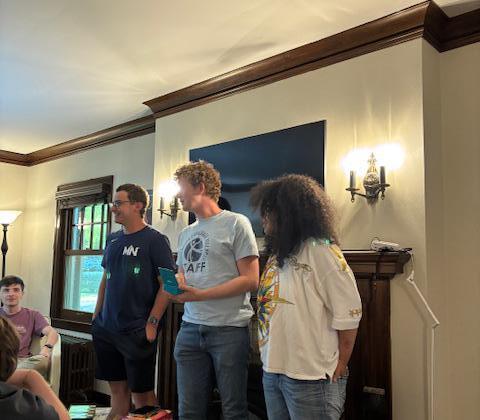
SYLVIA WESTRA THE RUBICON
When senior Lucille Brooks stepped up to Head of School Luis Ottley’s front door, she was nervous. It was daunting being at the head of school’s house, and Brooks had no idea what to expect of the evening. When Ottley’s wife let her inside, Brooks didn’t see any other students. Worry filled her mind, until she realized everyone was in the backyard having fun. She immediately let out a sigh of relief.
Ottley’s idea to host senior dinners came together toward the end of last school year.
“I realized that in my role, as the head of school, if I don’t get to shadow students ... I don’t really know the students,” Ottley said. “And I really wanted to change that.”
Ottley chose to host four dinners at his home, one each week of September. All seniors were invited by advisory, so each advisory chose the date that worked best with their availability.
The first dinner took place on Sept. 4, which Brooks and senior James Welsh attended among others.
“It was nice to see [Ottley] in a context outside of school, and then actually understand who he is, what he stands for, things like that,” Welsh said. “I admit I was a little skeptical at first, but I think [the dinners are] a great idea. It was a lot of fun. I got to know my classmates better. I got to know him better.”
Over the course of the night, the students ate, chatted and played taboo. Dinner consisted of beans, rice, tortillas, fajitas, dumplings and chocolate strawberries. For taboo, the students split into three teams, and Ottley participated.
“The only thing that I’d want to change is the result of the board game,” Ottley said.
At the end of the night, Ottley had the students go around and say what they have loved about their time at St. Paul Academy and Summit School, and what they want to improve.
“I said that I love the people at SPA. I’m a lifer, I’ve been here for 13 years, that’s the reason I’ve chosen to stay,” Welsh said.
“What I said could improve is the relationship
between the administration and the students, but [Ottley’s] very down to earth. He agreed and asked for my input.”
Senior class lead advisor Amy Stading said the dinners are a step toward building better relationships.
“I think the dinners are about Dr. Ottley wanting to open his doors, create an opportunity for gathering and hospitality to the oldest students in campus, and hear about their experience,” Stading said.
Ottley is grateful for the opportunity to hear firsthand about the seniors’ experiences.
“When you’re trying to do the very best job you can to be the head of a school, hearing from students about what matters helps inform how you do that work,” he said. “I could sit in my office and imagine what matters to students, but if I don’t have the opportunity to interact and connect with them, and they get to tell me what’s important, then they’re just my ideas.”
Brooks felt that the discussion gave a platform to students that wasn’t previously available.
“Sometimes it feels like, when you’re [at SPA], you don’t really get a say in what happens around the school, and even when [the administration does] ask you in surveys, it’s not like you’re talking to a person,” Brooks said. “But in this discussion, it just felt like I was making an impact, even though I wasn’t really doing that much.”
Brooks urges those invited to Ottley’s house to show up and take advantage of the opportunity.
“I know it’s weird that you’re in [Ottley’s] house, but that sort of fades away really quickly, and it just becomes a really enjoyable night,” Brooks said.
Ottley hopes to make the dinners a tradition specific to the seniors, but only if the seniors want.
“It’s really going to depend on participation from the seniors, but I think [the dinners will] have a very positive impact,” Welsh said. “I hope it becomes a tradition, because it was really nice.”
Ottley’s final dinner took place Sept. 29.

Although President Donald Trump claims his One Big Beautiful Bill, signed into law July 14, will reduce financial stress on Americans, critics say its cap on student loans could make higher education even less accessible to those who most need help.
COST OF COLLEGE’S EXPONENTIAL INCREASE
Senior Zoe Huelster, who’s currently navigating the college process, shared her opinion on the loan caps. “It’s unfair because it will make it harder for people who can’t finance all of their own college tuition to attend the institutions they want to.”
Director of College Counseling Tina Elfenbein shared that, in addi-
tion to capping student loans, her conversations with higher education enrollment officials have “focused on other areas of concern: international student enrollment, the endowment tax and government oversight of admission and enrollment work.”
A March executive order indicated Trump’s plans to shut down the
Department of Education entirely, claiming that “closing the Department of Education would provide children and their families the opportunity to escape a system that is failing them.”
Senior Shefali Meagher said the attacks on education are unsurprising. “It makes sense in terms of allocating more money to certain initiatives that Trump really is a fan of,” she said.
Making good on his March executive order to dismantle the DOE, Trump relayed that the federal student loan portfolio would be moved to the Small Business Administration. While this executive order has yet to be implemented, moves have been made to lessen the DOE’s duties under the OBBB, exemplified in the recent loan caps for both students pursuing higher education and parents of students pursuing higher education. These caps likely won’t just affect students look-
ing to attend private schools but all forms of higher education.
As of July 1, 2026, borrowers will have a lifetime borrowing limit of $257,500 for all federal student loans. For students seeking a professional diploma, such as prospective doctoral students, borrowing is capped at $50,000 a year and $200,000 over a lifetime.
According to the Association of American Medical Colleges, the average cost of a medical degree at a public institution is $286,454.
Elfenbein shared words of wisdom for students looking at colleges in these uncertain times: “I think we all need to be cautious; there is a tremendous amount of uncertainty now and that will likely persist. When it comes to college admissions and financial aid, the landscape changes frequently. All students, parents and those who support them can do is
try to stay informed and to make the best decisions available with the most accurate information at hand.”
According to NPR, 1,400 department employees have been laid off, as of July 1. Additionally, many have taken early retirement, cutting the staff to about half its size before Trump took office. The staffing changes could make it difficult to implement new policies around student loan overhaul.
During his first term, Trump proposed eliminating the Public Service Loan Forgiveness program and consolidating repayment options, signaling less government support for financing higher education. In his second term, this stance has solidified, culminating in the OBBB’s loan caps and effort to dismantle the Department of Education altogether.
$30,716 $92,288
EXPANDING EXPENSES. One year of college tuition at the University of Pennsylvania has increased exponentially since 1945. Data was found in the University of Pennsylvania’s online archives in a section titled “Tuition and Mandated Fees, Room and Board, and other Educational Costs at Penn.” The cost of college living shown is made up of tuition, room and board, general fees, and in later years, meal plans.
Within hours of taking office on Jan. 20, President Donald Trump proposed levying tariffs on the U.S.’s biggest trading partners, Canada and Mexico. In simple terms, tariffs are an additional tax imposed on goods imported from other countries.
Historically, tariffs have been a key part of U.S. economic policy, with several presidents imposing tariffs. Recently, other countries have become accustomed to setting tariffs on the U.S. However, Trump’s current tariff rates have been greater than previous rates. For the broader population, these new tariff rates have increased prices for essentials and reduced leisure spending.
History and economics teacher Varsha Venkatasubramanian explained the personal effects of tariffs on individuals, especially teens.
“The main way tariffs are going to affect us is food, clothes and other things we buy with disposable income … It probably affects a lot of students’ parents that way, because it messes with their retirement portfolios,” Venkatasubramanian said.
On Apr. 10, the White House clarified that tariffs on Chinese goods had been increased from 125% to 145%, which prompted China to respond with a 125% tariff on U.S. goods. However, due to a stock market crash caused by the tariffs, a temporary truce was agreed upon, under which the U.S. would reduce its tariff rates to 30%. In comparison, China would maintain its retaliatory tariffs at 10%, as reported by BBC.
Noticing the effects of tariffs, sophomore Eamon Bakker described the change in his family’s shopping habits.
“[My parents] look at the prices a bit more, because they’ve risen so
much … mostly things like energy drinks, cereal and eggs ... but my parents prefer to buy more local produce, such as going to the farmers’ market more often,” Bakker said.
[My parents] look at the prices a bit more because they’ve risen so much.

Food isn’t the only product being affected by tariffs. In the Twin Cities area, Fox9 found that Apple, Nike and Walmart were all significantly affected by the disruption in global trade. The Consumer Technology Association found that in April 2025, smartphones had increased in price by 31%, while a study by Yale University in August
2025 found that clothing prices had increased by 37%.
The effect of tariffs on convenience is prevalent for senior Sam Ray. “I’ve noticed when I have my hair curling products that they’ve gone up in price a lot, so I’ve stopped using them as much,” Ray said.
As tariffs have prompted Americans to reconsider what is truly necessary, they have altered the landscape of clothing, food and healthcare. While tariff rates have stabilized over the past eight months, negotiations continue between the U.S. and several countries. As of Aug. 6, the most affected countries by U.S. tariffs are China, Brazil, South Africa and India.
Furthermore, the tariffs imposed by the Trump administration have been challenged over the use of the emergency powers law against Congress’ exclusive authority to impose tariffs. The case has been deferred to the
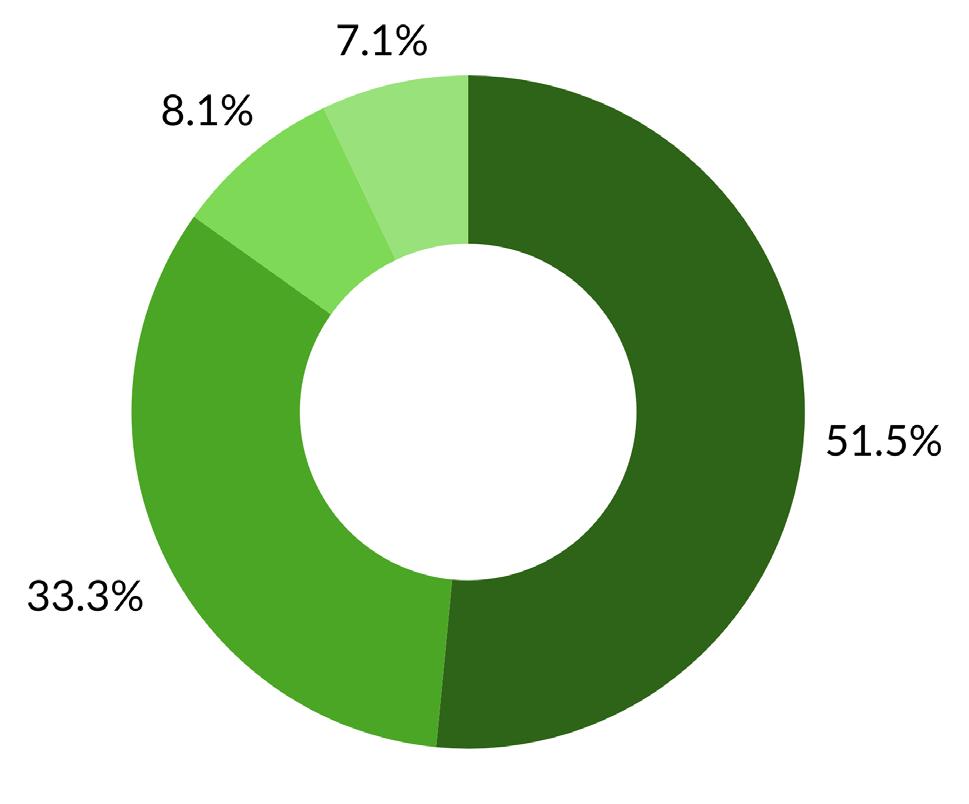
INFORMATION: Statista, Tax Policy Center
INFOGRAPHIC: Evie Gardner
TRUMP TARIFF RATES. Roughly 50% of countries (out of 194) have the base rate of a 10% tariff. 33% of countries have a 15% tariff. 7% and 8% of countries have 15-25% tariffs and 26-50% tariffs, respectively. Canada and Mexico each have a 25% tariff, and China has a 145% tariff, as of Apr. 10.
Supreme Court, where they will review two cases on tariffs imposed under the International Emergency Economic Powers Act. The first hearing for oral arguments has been scheduled for the first week of November.

OUR MISSION
We strive to capture the spirit of the community through its stories while inspiring deeper conversations. Above all, we stand for integrity in our pursuit to inform and engage our readers.
THE RUBICON
St. Paul Academy and Summit School 1712 Randolph Ave • St. Paul, MN 55105
rubicon.spa@gmail.com www.rubiconline.com @TheRubiconSPA
25-26 STAFF
THE RUBICON
EDITOR-IN-CHIEF
MANAGING EDITOR
CHIEF VISUAL EDITOR COVER NEWS EDITORS
OPINIONS EDITORS
HEALTH & WELLNESS EDITOR IN DEPTH EDITOR
FEATURE EDITORS
SPORTS EDITORS
A&E EDITORS
GOOD QUESTION EDITOR
COPY EDITOR DATA JOURNALIST
Sonia Kharbanda
Juan Miguel Adams
Amanda Hsu
Peter Ostrem
Evie Gardner
Wynter Feiner
Peony Steele
Eva Burns
Izzy Middlebrook
Peter Ostrem
Ariella Kim
Sylvia Westra
Sam Galarneault
Harper Larsen
Tallulah Dogwill
Sunde Auberjonois
Lina Abid
Ivy Evans
Jack Gao
RUBICONLINE
DIRECTOR OF RUBICONLINE
PRODUCTION MANAGER
CREATIVE DESIGN MANAGER
DIVERSITY MANAGER
BEATS MANAGER NEWS EDITORS
OPINIONS EDITORS
FEATURE EDITORS
IN DEPTH EDITOR
A&E EDITORS
SPORTS EDITORS
COPY EDITOR
PODCAST EDITOR
RUBICON TV
SOCIAL MEDIA MANAGER
Thomas Chen
Greyson Sale Zimo Xie
Lani Ngonethong
Elizabeth Tuttle
Peter Lipinsky
Ike Obi-Walker
Winston Arvidson
Audrey Jansen
Zahir Hassan
Naomi Zins
Shrey Nemani
Lani Ngonethong
Yassin Mokbel
Senetneb Theba
Allen Wang
Aiden Ruediger
Yasmin Khan
Nabeeha Qadri
Nora McKoy
Andrew Lipinsky
Audrey Peltier
CONTRIBUTORS
Carys Hsiung, Annika
STAFF WRITERS
Dhru Chaney, Olivia George, Sofia Johnson, Rohan Kavuru, Niko Lifton, Katherine Lin, Lilly Parr, Annalia Sarzoza, Ellie Whitcomb
ADVISER
Kathryn Campbell, CJE Scott Gillespie
MEMBERSHIPS
Columbia Scholastic Press Association
National Scholastic Press Association
MN High School Press Association Quill and Scroll Honor Society
CURRENT

EDITORIAL CARTOON: Annika Kim
UNITY IN DIVERSITY. Differences in gender identity and presentation do not change one’s shared humanity; treat transgender community members with the respect and acceptance they deserve.
of the staff agree
Given the recent attacks on the transgender community, now more than ever it’s essential to help provide trans people with a sense of belonging and safety.
In early 2025, President Donald Trump signed a series of executive orders limiting transgender healthcare and rights on the federal level. Then, on Aug. 27, the horrific shooting at the Annunciation Catholic School and Church in southwest Minneapolis created more fear for the trans community.
The shooter was reported as a transgender woman, a fact anti-trans activists used to further their political agendas. Just a few days later, Aug. 29, Minnesota Republican Rep. Tom Emmer called on Minnesota lawmakers to revoke the state’s trans refuge law. The bill, passed in 2023, established the state as a legal refuge for anyone seeking gender-affirming care. Emmer’s call is just the latest in a long string of political attacks on trans individuals and their identities, a string with unfortunately no end in sight.
The school administration shares part of the responsibility to make members of the LGBTQ+ community feel welcome, and there are already some policies in place that support transgender identities. These policies include the barring of discrimination based on students’ gender identity and students’ ability to share their preferred name and pronouns regardless of their legal ones.
In addition, they affirm St. Paul Academy and Summit School’s support of all students participating in their chosen athletics, regardless of gender identity. SPA’s LGBTQ+ affinity group, Rainbow Connections, also provides a safe space for trans students. While the administration and student groups must continue to provide support, the entire student body shares responsibility.
Students need to be aware that their actions have a far larger impact on belonging than administrative decisions, and that students need to respond to the administration’s call to create belonging seriously. It is common for students to share their name and pronouns during class at the beginning of the school year; students need to take these shares seriously and refer to their fellow students by these names and pronouns.
Beyond this, students should avoid asking their trans classmates personal or complicated questions that they wouldn’t ask of a cisgender person. This can create a feeling of othering, even if it comes from a place of genuine curiosity.
There are other actions students can take to show their support and understanding for our trans peers. The first is to make themselves more knowledgeable about the issues that trans people face daily. Not just during times of distress (like now), during pride month, or on trans days of visibility and remembrance, but on a regular basis. Trans people don’t just face struggles when attention is drawn to them; they face them every day.
The second is by challenging those at all levels of government who will use the fear of trans identity to take away rights. Recognize that most judgments passed by people who are against trans identities are factually incorrect and are meant to spread hate.
When peers or classmates speak out against trans communities, respond by bringing the conversation back to the real people behind the labels. Most of the hostility directed at the trans community stems from dehumanization and ignorance. It is essential that students not only resist this narrative but also fight back against it.

Belonging at SPA is one of the key factors of the community. Teachers often tell me that being welcoming and kind can go so far in a school with such few students. At first I was hesitant about all the socials and little get-togethers that the
school hosted. However, eventually I realised that it was so important for helping students like me to belong in the environment. Now I agree and love that community is formed through welcomingness and a sense of belonging. For me, when I came to the school in sixth grade, I found myself loving the commu-
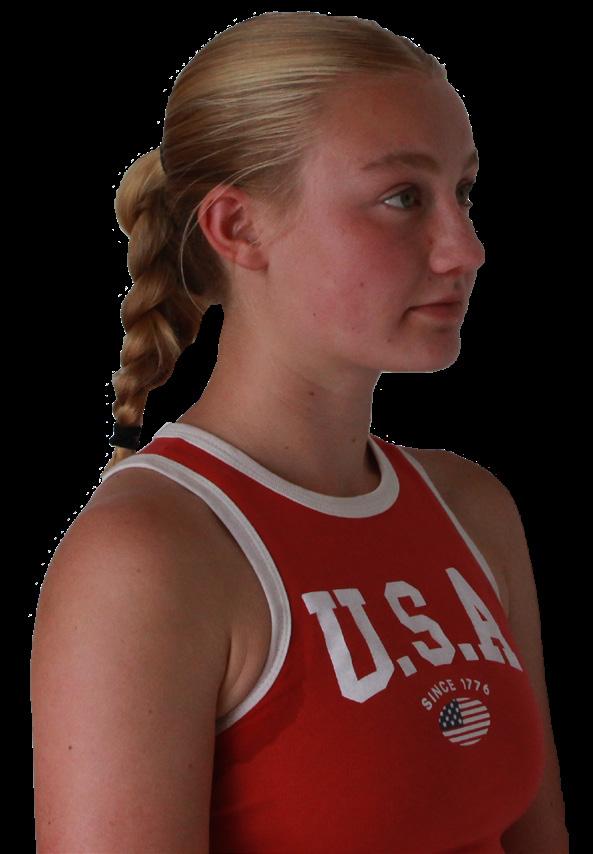
MAREN OVERGAARD Guest Writer
I have the greatest sense of belonging in the SPA community outside of the classroom. My sports teams have always been a place where I feel seen, regardless of my age, gender or ability. I joined the cross-country
nity. Eventually, I was able to feel a sense of belonging because of how kind everyone was, even though the school can be kinda clique-y. Overall I think the students and faculty create a welcoming community, helping everyone feel like they have a spot at SPA.
SAIT Guest Writer
Belonging at a school like SPA means feeling like you’re a part of something bigger, where you’re accepted for who you are and not expected to pretend or hide part of yourself to fit in. It’s about knowing that your presence matters, both inside and outside of a classroom, and that your ideas, experiences
Belonging is a focus. Students define it for themselves.
team in sixth grade, and from the very first day, I felt respected and valued. The older athletes didn’t hesitate to include me on long runs or cheer me on during hard workouts. Their support and positive energy stretched beyond our time spent at practice and into my academic life. I have always
PUBLICATION INFO The Rubicon is published eight times a year. We distribute 500 copies of each issue on the Randolph Campus which are available for free.
ADVERTISING The Rubicon does not accept advertisements.
ANONYMOUS SOURCES Although it is always preferable to use names when reporting, there are times when it is necessary to protect those we report on. Use of grade level or first name only are the most commonly used methods of anonymity.
BY LINES credit the individual who conducted interviews, drafted, revised and fact-checked an assigned story. Shared bylines are given to joint effort
felt that I can rely on my teammates to lift me up if I have a tough day or to offer guidance if I am struggling with an assignment for school. The older I’ve gotten, the more I am able to appreciate the sports community that I’ve experienced both in and out of practice!
assignments. Stories that include supplemental materials include a credit at the bottom that states “Additional reporting by” followed by the name of the reporter.
EDITORIALS articulate the collective opinion of the staff, while minieditorials, opinions pieces, arts reviews, and columns belong to the author.
SUBMISSION GUIDELINES Opinions are welcomed as Letters to the Editor or Submitted Opinions and may be published in print or online. Letters should not exceed 400 words and opinions should not exceed 650 words. Both may be edited for length and style. All pieces are published with a full name.
SOFIA RIVERA Guest Writer
Belonging is a fundamental piece of the SPA initiative, yet belonging looks vastly different depending on the individual. Many use the ideas of belonging and fitting in interchangeably, omitting the detail that students often change themselves to fit in with the friendships they seek. Yet this pretense students uphold to fit in is the fur-
UPDATES AND CORRECTIONS
During the post-critique process, staff members identify inaccuracies and discuss reader feedback. The staff publishes corrections when an error is discovered during critique or reported to a staff member. Corrections should be directed to the Editor in Chief or appropriate section editor.
IN PRINT: Corrections are printed at the bottom of News p. 2. Corrections will be printed in the month following the error and, if the story is also published online, will be corrected following the online corrections policy.
PHOTO CREDITS Photos are labeled with the photographer name, whether on staff or freelance. Images sourced outside the staff are credited with

and background are respected. A school that truly fosters belonging should be a place where everyone, no matter their interests, appearance or personality, is appreciated. It should be a place where kindness, understanding and encouragement are the norm, not the expectation. Belonging isn’t just about having a group of friends; it’s also about knowing your voice matters and that you contribute positively to the environment around you. When students feel like they belong, they are more confident, motivated and willing to take risks, which leads to a stronger and more connected school community for everyone.

thest thing from belonging, as they are not their authentic selves. I think it is common for schools or big institutions to try to make everyone feel as though they are a part of one big clique—that is the goal, at least. Here, the line between blending and belonging is blurred, and students become one and the same as they strive to like and be liked by everyone. This promotion of blend-
guidance from the National Press Photographers Association guides.
NAME AND PRONOUN USE
The Rubicon uses the name and pronouns shared by individual sources during interview. Each interview and survey begins with a request to say and spell the person’s name and to share the pronouns they would like to see published in the story, and the reporter is transparent about where the story will be published. If a mistake is made, a correction will be posted per the corrections policy.
CONFLICTS OF INTEREST The Rubicon news and Ibid yearbook avoid conflicts of interest while also honoring the fact that our reporters are involved in the school and local community
ing makes for a disconnected community, lacking differentiation that makes a student body compelling and interesting. As SPA moves forward with the belonging agenda, it is essential to understand each grade’s nuanced relationships and lack thereof; once this element is assessed, belonging can be built or strengthened where it benefits the community.
beyond their work on staff. Staff members avoid writing about students, teachers, student clubs, affinity groups, and organizations that they are closely involved with. The reporter is always responsible for disclosing conflicts of interest, but if a conflict of interest comes to light after publication, it does not warrant removal of the story. If it is in the best interest of a source to be interviewed by a close friend in the case of a sensitive topic, the interviewer will not write the story— they will solely conduct the interview. Unavoidable conflicts of interest are specifically mentioned at the top of a story. Photographing or videography of news events is never a conflict of interest.
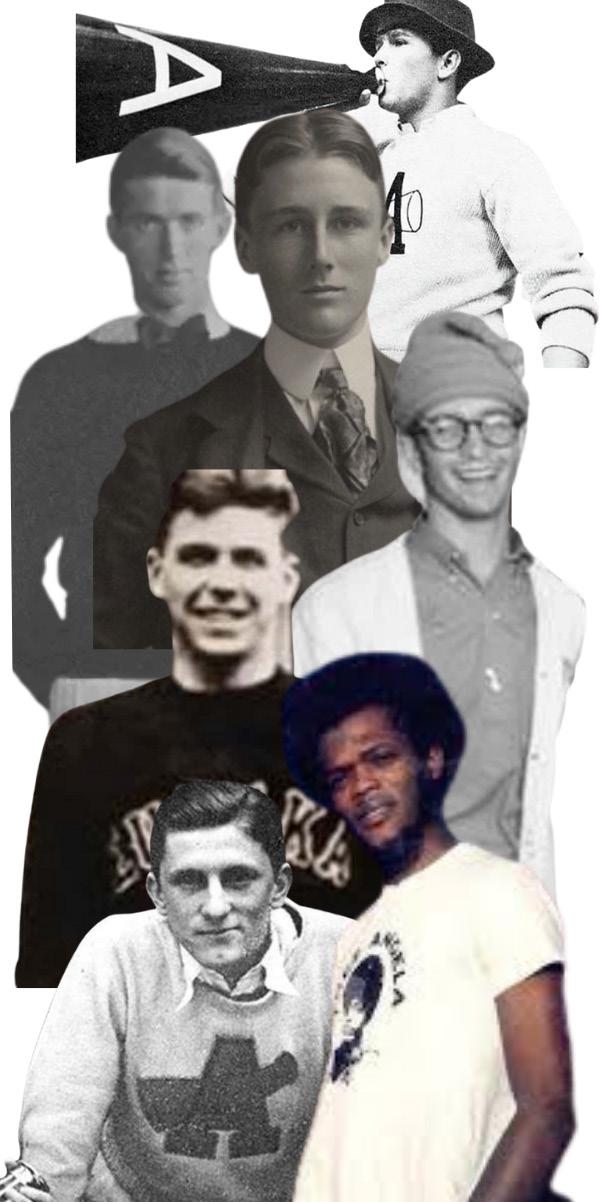
SAM GALARNEAULT THE RUBICON
After the Minnesota Vikings announced the addition of two male cheerleaders to their 2025 squad, actor Kevin Sorbo quickly took to social media and responded to the Vikings’ post on X: “I’ve been a Vikings fan all my life … sigh. I need a new team now.” Former NFL star Antonio Brown also responded with homophobic slurs and profanity.
The intense backlash from fans and social media about male NFL cheerleaders is unacceptable and derived from homophobia and outdated gender norms.
Louie Conn and Blaize Shiek, both male-identifying dancers, joined the Vikings’ cheer team in early August. Many fans and spectators had intense and mixed emotions due to this change. A good majority of the reaction was not positive. The media blew up fast with many thoughts targeted to the Vikings and the NFL. These comments were in disagreement and disgust with the new male cheerleaders.
Conn and Shiek have extensive dance and cheer backgrounds, making them qualified for this position. After receiving bigoted, hateful and homophobic comments towards the Vikings’ decision, the Vikings responded, affirming their choice. Their public statement made it clear that the team was created through rigorous and fair selection to find the best fit. They sought passion, talent and dedication, which Conn and Shiek display. The Vikings gave their statement through an email sent to Newsweek. The statement ended with this: “We support all our cheerleaders and are proud of their role as ambassadors of the organization.” Under a lot of pressure and criticism, the Vikings showed confidence and support with their decision.
Still, social media was filled with explicit and targeted language about the two male cheerleaders. For many, male cheerleaders are a new sight and experience when watching the NFL or cheerleading in general, but that doesn’t make it okay to attack someone because of a different circumstance. Unfamiliarity
with these changes isn’t a valid excuse for hate speech. Society is constantly changing and growing, and people cannot live in their own bubble.
Furthermore, the history of cheerleading is long and more complex than many understand. Cheerleading has never been a female-only sport or activity. The first so-called cheerleader was a University of Minnesota student, Johnny Campbell, who led a large audience chant during a game in 1898. They were called “Yell Leaders” then, but this practice slowly shaped into the sport now called cheerleading. By the 1920s, cheerleading had become more common and found its way into extracurricular activities in many schools. Still, boys were the front face of this sport. Former president George W. Bush started his cheerleading in high school and then brought the sport with him as he attended Yale University. Acclaimed actor Samuel L. Jackson was also officially recognized as a cheerleader in 1966 at Morehouse College. The Vikings are also not the only NFL team to have male athletes a part of their cheering team. Eleven other NFL teams have male-identifying performers on their cheerleading squads in 2025.
Male cheerleaders aren’t new. They aren’t harmful. They have been a part of cheerleading history and those who disagree should understand the history better.
It is harmful that there has been so much hate towards Conn and Shiek for following their passion and talent. They’re not changing rules or appearing in spaces not meant for them. Although there are many supportive comments, there should be no room for people to target these athletes and their sport.
AMANDA HSU CHIEF VISUAL EDITOR
In August, President Donald Trump deployed the National Guard to Washington, D.C., to, in his own words, “rescue our nation’s capital from crime, bloodshed, bedlam and squalor and worse.” Similarily, in response to the widespread protests in California against increased ICE activity in June and July, Trump also deployed around 5,000 members of the National Guard to Los Angeles in an effort to quell the civil unrest brewing in the city. More recently, Trump threatened to extend his crusade to Chicago, intent on also lowering crime rates there.
These recent deployments have captured national attention, and the circumstances surrounding the deployments make it clear that Trump’s decision was a misuse of federal power. Inconsistent and vague justifications for the National Guard hint at hidden purposes beyond simply assisting or protecting these cities. Citing Title 10 U.S.C. 12406,
Trump summoned the National Guard on two specific terms to California and D.C.
In LA, he expressed the presence of the troops was to “suppress rebellion,” and in D.C., the troops were to “execute the laws of the United States.” However, local officials in both cities, including the D.C. police department and LA Mayor Karen Bass, have disagreed with his rea-
according to the DOJ. The CEO of the Council of Criminal Justice, Adam Gelb, said, “overall, there’s an unmistakable and large drop in violence since the summer of 2023, when there were peaks in homicide, gun assaults, robbery, and carjacking.” D.C. Attorney General Brian Schwalb filed a lawsuit against Trump Sept. 4, citing harmful economic and jurisdictional impacts.
Male cheerleaders have been around for a long time; the importance of acceptance and inclusivity in sports is needed now more than ever. The more people reject division and are instead susceptible to change, the more connections and community they can build together. WITHOUT PROPER CHECKS IN PLACE, SIMILAR FEDERAL ABUSES OF AUTHORITY COULD CONTINUE.

soning.
The D.C. police department questioned the necessity for extra troops to lower crime rates when the total violent crime in D.C. in 2024 is the lowest it has been in 30 years,
Similarly, in California, Federal Judge Charles Breyer ruled the deployment unlawful, stating Trump had abused his power, turning the National Guard into his own “national police force.” California Governor Gavin Newsom and Bass backed up the court decision, with Newsom stating, “no president is a king — not even Trump — and no president can trample a state’s power to protect its people.” His comment highlights how deploying the National Guard usually falls under the jurisdiction of the state governor, not the president; similar to how Minnesota Gov. Tim Walz approved activation for National Guard assis-

tance after the 2020 Black Lives Matter protests in Minneapolis. In this case, however, Trump neither notified nor consulted Newsom before sending the National Guard to LA.
Furthermore, after the protests in LA ended, the National Guard remained stationed in Long Beach, participating in immigration raids and conducting arrest warrants alongside local authorities, a wholly different purpose than that for which they were deployed. Coincidentally,
all of the cities Trump has targeted so far have been major blue cities with large immigrant populations, with over 20% of both LA and Chicago’s total populations being foreign-born. Cracking down on these specific cities could be an attempt at furthering his own political agenda and enforcing his ICE immigration raids.
Whether incompetence or personal motivations fueled his decision, in each circumstance, the obscure purpose behind Trump’s deployed
troops paints a picture of executive overstep, if not complete abuse of power. Without the proper checks and balances in place, similar federal abuses of authority could continue. It is citizens’ duty to speak up about federal overreaches and exploitations publicly, which can bring awareness and contribute to policy changes. Advocating for clearer legislation and contacting local officials are also other ways to create positive change. There is no place for kings in America.
Brands intentionally make ads that will stand out in some way, and nowadays, the only way to get under that spotlight is to cause a commotion. Consumers often play into a brand’s intentional controversy by blowing things out of proportion and falling into the trap of extreme advertisement. Brands are fueled by attention from the media, and when something goes viral on any platform, it gets clicks and eventually, cash.
They should be held accountable for their messages and the people they choose to represent them.

One recent example is actress Sydney Sweeney’s ad campaign with American Eagle. Sweeney is a big name on social media, known for her role as Cassie in “Euphoria,” giving her the relevance many brands crave. When she delivered the lines “Genes are passed down from parents to offspring, often determining traits like hair color, personality and even eye color. My jeans are blue,” the ad blew up. Many people online criticized the campaign for being tone-deaf, claiming that it put out the idea that having blond hair and blue
eyes meant having ‘superior genes.’ In contrast, many were upset about the reaction, claiming people were being ‘too woke,’ and that the campaign was harmless. In this storm of controversy, American Eagle was winning: they were earning money and gaining attention, even if the spotlight was negative.
Another example of a recent campaign that caused an uproar on social media was the Matt Rife and Elf collaboration. Rife is a comedian and actor who has received criticism after his 2023 Netflix special, “Natural Selection,” which made jokes about domestic violence. Conversely, Elf is a makeup and skincare brand known for uplifting women and spreading inclusivity in the beauty industry, where that isn’t always the case.
Hiring someone like Rife, who has received backlash from the public about his inappropriate and offensive jokes, seems random, especially considering that Rife had not previously been involved in any cosmetics campaigns. Like the American Eagle ad, Elf anticipated attention, especially with the detailed process brands undergo to release a campaign.
Ads are intended to evoke a feeling, and in today’s world, outrage is the most profitable emotion for brands. By consistently releasing content to trigger reactions, brands make serious issues feel like marketing tools. They should be held accountable for their messages and the people they choose to represent them. Still, along with their accountability, social media users must be conscious and aware of the cycle they feed into through their reactions. Until consumers stop rewarding attention-seeking brands by boosting them through social media, brands will keep releasing content that causes drama and offends people.

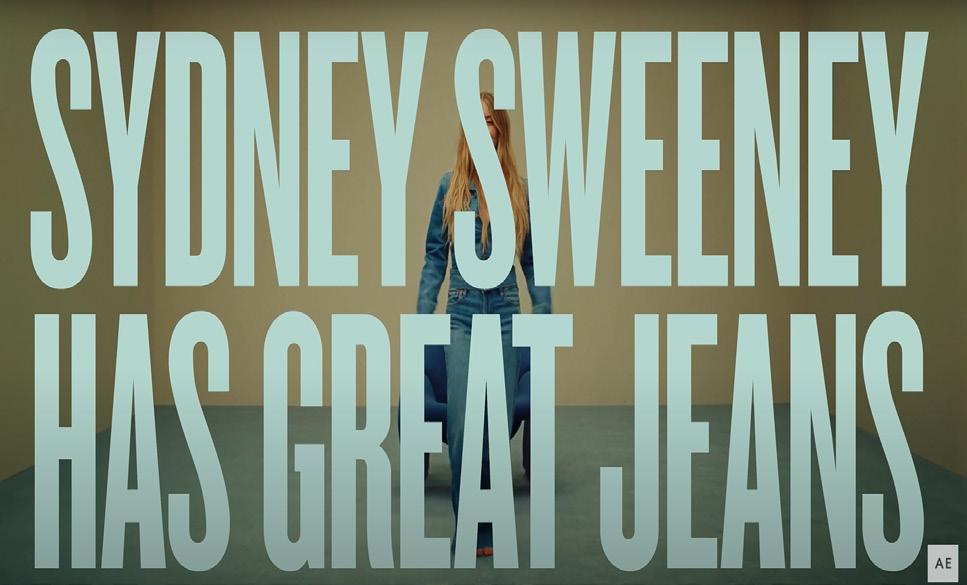

SUNDE AUBERJONOIS
THE RUBICON morial would. 49 lives were taken in a targeted hate crime; in fact, it was the deadliest hate crime perpetrated against the LGBTQ+ community in modern history.
Walking down the streets of New York City, it is not uncommon to see a bicycle that has been painted white and decorated with flowers, propped up against a stop sign next to a busy intersection. You might also see one of these bikes in a city like San Francisco, Pittsburgh, Seattle, Albuquerque or occasionally even Minneapolis. If you don’t know what they stand for, they can be a source of confusion. If you do know what they stand for, you might take a moment of silence or give a prayer. These are called ghost bikes, and they are a way to commemorate cyclists killed after being struck by motorists.
Walking down Esther Street in Orlando, Florida, and seeing the Pulse memorial might have evoked similar feelings to those one might experience when seeing a ghost bike. A rainbow crosswalk likely won’t register as a memorial for someone who doesn’t know to be looking for it. However, for people who know about the Pulse Nightclub shooting of 2016, it might bring up feelings that any me-
It asked nothing of passersby, only that they remember, even briefly, what happened there.

Like the ghost bike, the Pulse crosswalk marked not just a place, but an absence. It symbolized an interruption in everyday life caused by unimaginable loss. It was a signal, gentle yet enduring, that the street where the crosswalk sat had been forever changed. It asked nothing of passersby, only that they remember, even briefly, what happened there. Like all memorials, its core purpose was simple: remembrance. That’s why it is so confounding that the crosswalk was painted over, in the middle of the night, with no public announcement, under or-
der from the State Transportation Department, with the stated intention of removing so-called political messaging from intersections. It’s an appalling act: a state department painting over the memorial for 49 victims of a mass shooting. That is an absolutely terrifying thought.
Calling the Pulse memorial an act of political messaging doesn’t align whatsoever with its purpose. The rainbow crosswalk did not advocate for a candidate or a policy; it commemorated lives lost in an act of violence against a marginalized and often targeted community. To call that political is to confuse identity with agenda and grief with activism. At some point, this society has to stop calling these misinterpretations and start calling them silencing. The Pulse memorial was not a political message but a civic expression of collective mourning, one that was backed by the community and installed with city approval. In that way, it was no different from a ghost bike. Both live in the flow of everyday activity in a city. Both rely on public awareness to convey their meaning. Neither demands attention, but each invites re-

flection. Except only one was removed by the state. Ghost bikes, while unofficial and unregulated, are most often left undisturbed. Their presence is quietly tolerated if not respected, because communities understand what they signify; they are public grief made visible. They are permitted, perhaps, because they do not provoke thoughts of who is being remembered, but how they were killed. The Pulse crosswalk, on the other hand, was erased under the pre-
tense of neutrality – the idea that having a public memorial for a shooting that happened in a “queer space” might mean something political. In doing so, officials revealed that the concept of neutrality, in this instance, is not neutral at all.
What made the Pulse memorial a target was not that it disrupted the peace, but that it represented the grief of a community that some in power would prefer not to acknowledge, or even speak about.
When we accept certain memorials and erase others, it sends a message about whose grief matters and whose can be pushed under the rug. It sends a message about whose lives are worth remembering. It is so important that our communities continue to serve the memories of ones we’ve lost that are facing erasure by spreading llove, not hatred. The creation of the Pulse memorial was not a political act. Erasing it is.
EVIE GARDNER THE RUBICON
Sleep is ubiquitous. Every person on the planet has slept, and had varying degrees of success the night before. Sleep is one of the most important physical necessities, but everybody seems to be deprived of it.
Teenagers are especially susceptible to a lack of sleep, but need on average nine to ten hours per night. Due to extracurricular commitments, adolescents are often limited to going to sleep later in the night. Teens also experience a changing circadian rhythm, which means they get tired in the middle of the day, leading to naps and going to bed late. Usually, kids will try to make up for lost sleep on the weekends, but contrary to popular belief, this just makes a bad sleep schedule worse.
A lot of self reflection is really important on this topic. So you can find the routine that works for yourself. “
physical health and wellness
teacher Rebecca Bjork

In many cases, students’ sleep schedules are worsened due to busy schedules, leading them to get home and go to sleep extremely late. Most get stuck in a cycle of bad sleep.
“Generally [I get] about seven hours a night, but sometimes a little less than that,” junior Alex Haupt said. “Sleep is just a thing that I need to come naturally. I have trouble falling asleep … hours earlier than I normally do.” Sleep ultimately comes down to science. Sleep occurs in five stages: wake, which is the state of being awake. Next are N1, N2 and N3, which are all considered Non Rapid Eye Movement (NREM). And lastly, Rapid Eye Movement (REM). NREM happens once a person just falls asleep, and they’ll typically have decreased muscle and brain activity. REM happens later, and is characterized by dreams and more active brain
activity. The combination of REM and NREM create sleep cycles which last approximately 100 minutes and cycle four to six times per night. Each cycle leads to progressively deeper sleep, with NREM taking up 75% of sleep.
The sleep cycle is driven by suprachiasmatic nucleus, a natural clock in the brain that controls circadian rhythms. The circadian rhythm releases hormones and neurotransmitters to keep the body awake or to make it more tired, and is mostly controlled by light perception. When it’s dark, the circadian rhythm produces neurotransmitters to make the body tired, and when it’s light out, chemicals like serotonin and dopamine work to maintain the waking state. This is why a boost in excitement awakens people.
Because of extracurricular commitments, bodily changes, emotional inhibitors and blue light, teens often find themselves with poor sleep hygiene. School can intensify this, but can also positively affect students’ sleep schedules because of a mandatory routine.
Sophomore Nime Snyder manages a consistent schedule throughout the year. “I usually go to bed at 10:30, and then I wake up at 7:20,” he said. School’s early start time coupled with schoolwork and extracurricular activities can lead to students having worsened sleep hygiene.
The importance of sleep is built into the wellness curriculum, although specifics can be difficult since everyone’s bodies require different sleep. Since emotions can be a major inhibiting element of sleep, wellness is often focused around that.
“[We talk about] how we can practice good sleep hygiene, and I talk a lot about how we can reduce some stress and anxiety in our life,” counselor Jake Turnbloom said.
In the ninth-grade physical health and wellness curriculum, the differences are emphasized in creating non-specific sleep education that still offers helpful tactics to go to bed.
“A lot of self reflection is really important on this topic. So you can kind of find the routine, the patterns that work for yourself and your body,”
physical health and wellness teacher Rebecca Bjork said.
Though every body is unique and requires different things regarding sleep, consistency is ever important. Establishing a routine can do wonders for falling asleep and regulating circadian rhythm.
Bjork teaches this to students with examples from her own life. “Creating a small routine for myself at basic training helped a lot. We had 15 minutes to shower and get in bed ... and I think my body kind of learned after a while, oh, this is our routine, right before we sleep. And so I eventually was able to fall asleep quicker and actually stay asleep, which I never thought I’d be able to do,” she said.
Routines have unbelievable effects on sleep quality; not just during the night but in waking too. Turnbloom implements his routines into his teaching.
“I want to try to be disciplined in the times I go to bed and the times I get up. I try not to sleep in an hour past when I normally do, stay consistent, move my body, get natural sunlight into my eyes. These are the things that I am focusing on personally to try to create healthy sleep,” he said.
Sleep has a profound impact on every aspect of life. With less sleep, bodies are more susceptible to viruses, brain function decreases making people groggy and less capable, and physical capabilities decrease as well. With consistent sleep, the ability to perform at one’s best skyrockets.
For students especially, it’s extremely difficult but essential to get good sleep. The most important thing to remember is consistency and wellbeing. A more consistent sleep schedule will help with not only falling asleep, but staying asleep and staying awake during the day. Focusing on wellbeing will remove sleep inhibitors, physically and emotionally, and lead to a more balanced sleep routine. Sleep is all around, but it shouldn’t get in the way of day to day activities. Prioritize sleep.
1

2

3

4
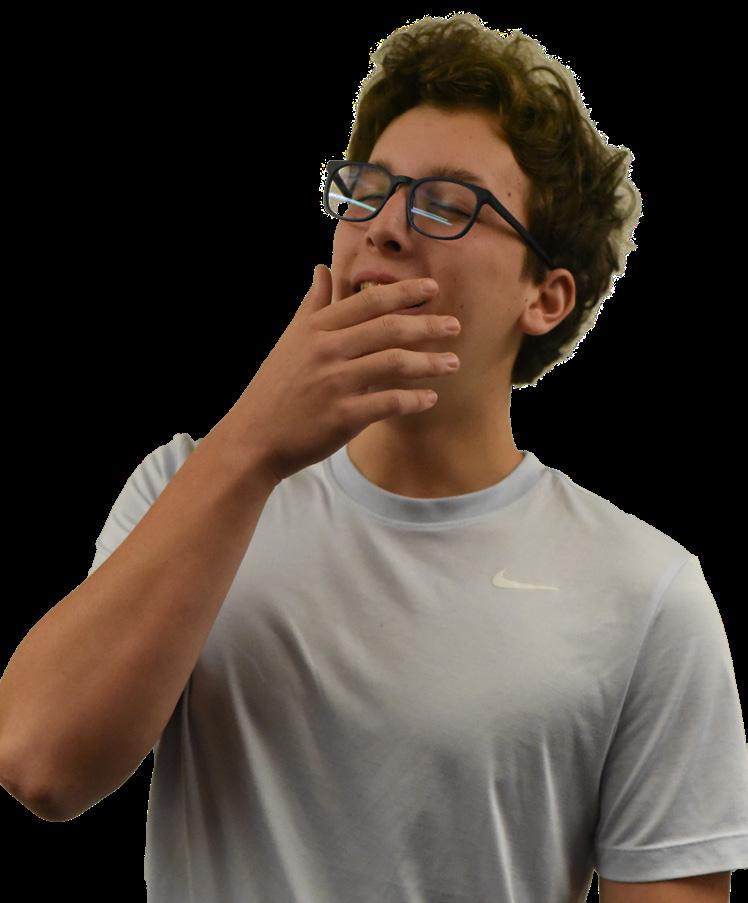
Non-rapid eye movement (NREM) stage 1 occurs over the first few minutes of sleep according to the National Sleep Society. Stage 1’s main focus is slowing down the major processes of the body. For example, slowing eye movements, calming the mind and reducing heart rate, to prepare for a good night of sleep.
Non-rapid eye movement (NREM) stage 2 focuses on dropping the body temperature and fully stopping eye movements. This is the stage where people are most likely woken up, according to the National Institute of Neurological Disorders and Stoke. Stage 2 is still considered a light sleep stage.
Non-rapid eye movement (NREM) stage 3 is when deep sleep begins. In this stage, all body systems have been slowed, the immune system is boosted, allowing the body to recover or grow. Certain processes like dreaming or memories may occur, but the majority of that comes later.
Rapid eye movement (REM) is when brain activity and eye movement increase. These symptoms occur because this stage is when most vivid dreams happen. REM sleep is normally around 25% of the sleep cycle according to MCG Health. Sleep should end at the end of a REM cycle, leaving awakened individuals feeling refreshed.
IVY EVANS THE RUBICON
Race. Global warming. Affordable housing. Vaccines. Female.
These are just a few of the many words the government has completely removed from record. The administration of President Donald Trump has used censorship in re-shaping American history: to exclude uncomfortable parts, remove funding from certain resources and reconsider what is being taught.
Senior William Hanna is uneasy about the rampant censorship.
“Pretending something didn’t happen doesn’t mean that it didn’t happen. It just makes it harder to address,” Hanna said.
Earlier this year, Smithsonian secretary Lonnie G.Bunch III received a letter from the Trump administration listing several exhibits across eight museums subjected to internal review. The letter was meant to replace “woke ideologies” in the museums with “unifying, historically accurate and constructive descriptions.”
“But it’s really important to know where our nation has been. …” Hanna said. “Trump … [wanted] to make the Museum of African American History more lighthearted, but that is such an important part of why our nation is the way that it is.”
Hanna added, “Even though … slavery ended 150 years ago, it still has a huge bearing on how our nation works and how communities function.”
who don’t agree.
“By presenting federal laws and policies as shared American values, Trump either ignores the values of his critics or presents them as un-American,” she said.
Artist Amy Sherald, whose infamous portrait of former First Lady Michelle Obama has been featured in the National Portrait Gallery since 2018, has called out attempts to censor her work.
Sherald was invited to hold her new solo art show there in September.
Titled “American Sublime,” it features approximately 50 portraits, including one that sparked controversy among White House officials: “Trans Forming Liberty” which features a transgender individual with parallels drawn to Lady Liberty.
Pretending something didn’t happen doesn’t mean that it didn’t happen. It just makes it harder to address. “
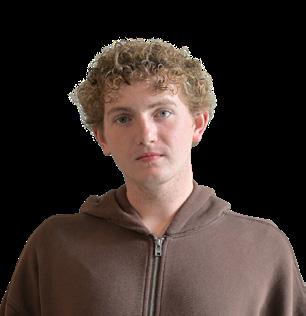
to withdraw her show, deciding that without “Trans Forming Liberty,” it was incomplete.
The political world isn’t safe from censorship either. After contradicting Trump over the success of the U.S. strike against Iran, the Pentagon’s Defense Intelligence Agency Chief was fired on Aug. 22.
The former head of the Center for Disease Control and prevention was also fired after refusing to accept new vaccine policies.
The legality of many of the 50 other firings has been questionable.
historical records. Using it, the Trump administration has erased all items with banned words from official documents. Little attention was paid as to how the bans were carried out, as many documents that had nothing to do with the specified words were erased on accident, because of their spelling. This lack of care for what is censored is making many Americans, like Moore, uneasy, especially as the banned words list continues to grow.
Despite the censorship that has occurred since he took office, Trump passed an order on Jan. 20 that directly contradicted the acts of censorship his administration has committed by criticizing the government’s censorship of “misinformation” on platforms like social media.
Senior Rowan Moore found this statement hypocritical.
“For the most part, right now, people are kind of catching this, and it’s being reported on. But I feel like people tend to have a kind of short-term memory. They might forget about all the things he’s done, because he’s always doing so much,” Moore said.
“I think what he considers misinformation isn’t what [misinformation] is,” they said.

This idea of unifying the country was President Trump’s justification for censorship. English teacher Meghan Joyce feels it’s a way of othering those
Already under scrutiny from the Trump administration, museum officials discussed removing the piece, but Sherald refused. Bunch offered to replace it with a video showcasing audience reactions instead, but Sherald vetoed the idea, as she disliked the opportunity the video would give for debate about trans validity. Opposed to the idea of being censored, Sherald ultimately decided
Since Trump took office, a list of more than 350 federally banned words has continually censored government documents, websites and
If the public is bombarded with headlines about new forms of censorship, they likely won’t be as eager to combat the issue, and that’s where it succeeds. The alternative is staying engaged: censorship loses to the people who talk about it.
“Thirteen
“Sold,”
Through book bans and influencer cancellations, for some students, censorship can feel somewhat inevitable as of late. According to the Pew Research Center, which conducted a study in March 2024 on limiting offensive speech, generations have gotten progressively desensitized to it.
While censorship can feel like a distant issue, the ramifications of the choice to censor a piece of media go deeper than people may think.
Sophomore Archie Dougherty defines censorship as, “The blockage of free speech. [The government is] stopping people from consuming media, or other things that might want to be hidden, but … shouldn’t be hidden.”
Censorship exists in multiple facets of media: books, news, movies and quotes and more.
The degree to which things are censored is also varied. It could be removing or deleting content, putting economic or financial pressure on the distributor or government control of licensing and censorship. Junior Sofia Rivera is familiar with censorship. “I mostly know [censorship] in the context of cancel culture with influencers, celebrities and influential people,” she said.
Whether censorship is defined as accountability or threatening someone’s free speech is in the eye of the beholder.
Rivera said that in instances where people with a platform abuse their influence: “That is when cancel culture can be a good thing, as their whole audience riles against them. And I think that that can be positive as you are taking down
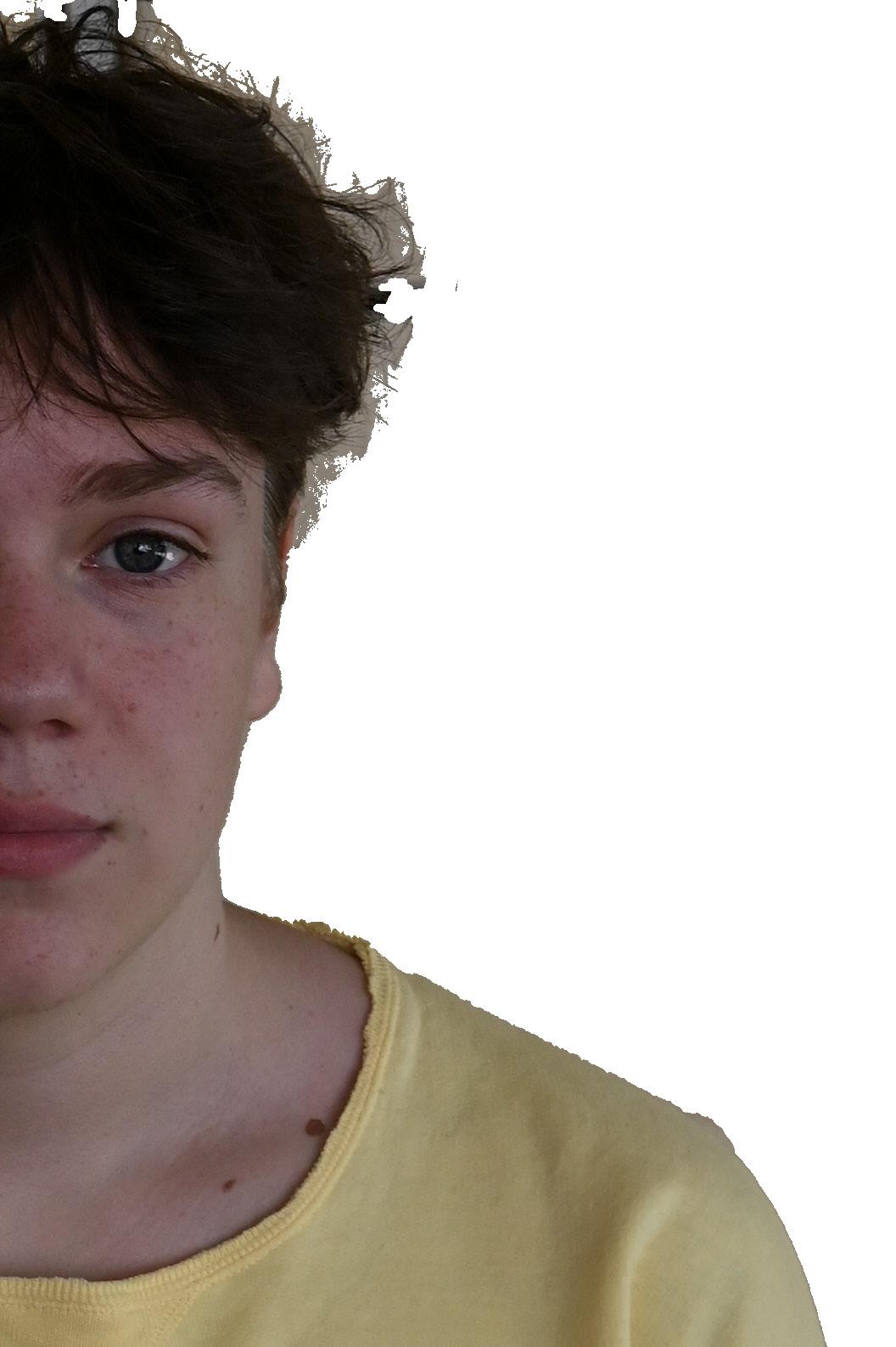
their negative messages,” she said.
However, Rivera acknowledges that it can be taken too far and that the audience should be aware of their power.
It really depends on what people want to talk about. If a few people don’t feel comfortable, then it doesn’t have to be talked about.

While censorship can feel wrong, some believe there are situations where censorship is justified. Dougherty said “the blockage of free speech, is bad because it’s a Constitutional right. So censorship is in direct opposition to free speech.”
On the other hand, when considering whether offensive off-campus activity should be censored on campus, Dougherty felt conflicted: “People are allowed to say whatever they want, but they can’t expect not to have consequences.”
Ninth-grader Lili Itzkowitz believes that on-campus censorship can have some merit on campuses with younger students. “You don’t want others talking about something very serious around young people,” Itzkowitz said.
While free speech is important, taking care and thought with words is always integral.
For students, the form of censorship they’re most likely to interact with is book bans. According to Penguin Ran-
dom House, historically, some of the most banned books are “The Great Gatsby,” “The Diary of a Young Girl,” “1984” and “Red at the Bone,” which is part of the ninth-grade English curriculum.
Dougherty brought up a book he read in middle school, “The Giver.” “[Book bans] upset me because no matter the caliber of the book, I don’t think that nobody should be allowed to read them, even if I don’t love the book,” Dougherty said.
While book bans are a popular form of censorship, classroom censorship is also a fundamental issue in student experience.
Itzkowitz said, “It really depends on what people want to talk about. If a few people don’t feel comfortable talking about something, then it doesn’t have to be talked about” Itzkowitz said.
Censorship may feel unavoidable, but there are ways to combat it.
Minnesota passed legislation two years ago prohibiting book bans, making it possible for communities to hold schools accountable; St. Francis school district in Minnesota had a lawsuit filed against them for banning books after a single complaint and choosing which books to ban based on an untrustworthy website.
Another way students can combat this is by reading challenged and banned books. Many libraries and bookstores have a banned books table.
Other ways to combat censorship include voting in local elections for school and library boards, reporting incidents of censorship and speaking out.
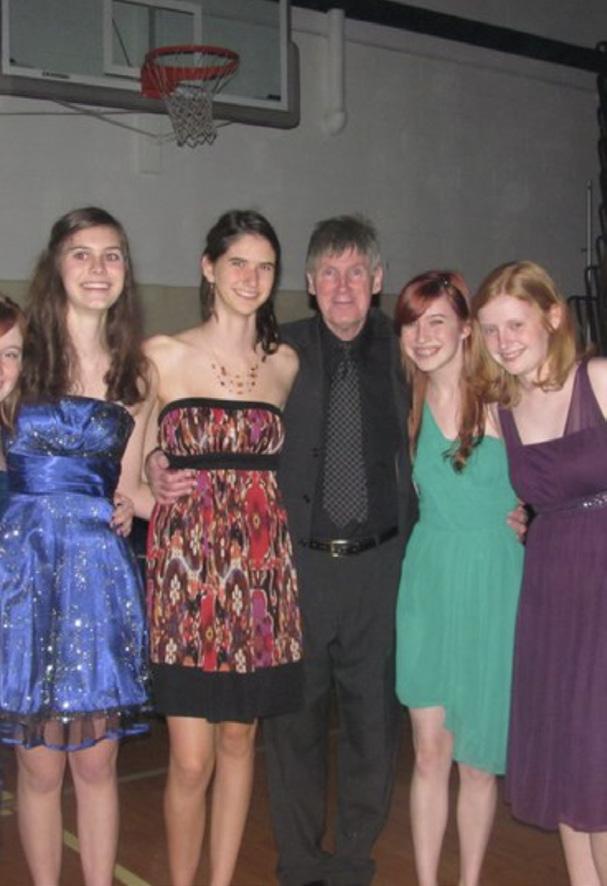
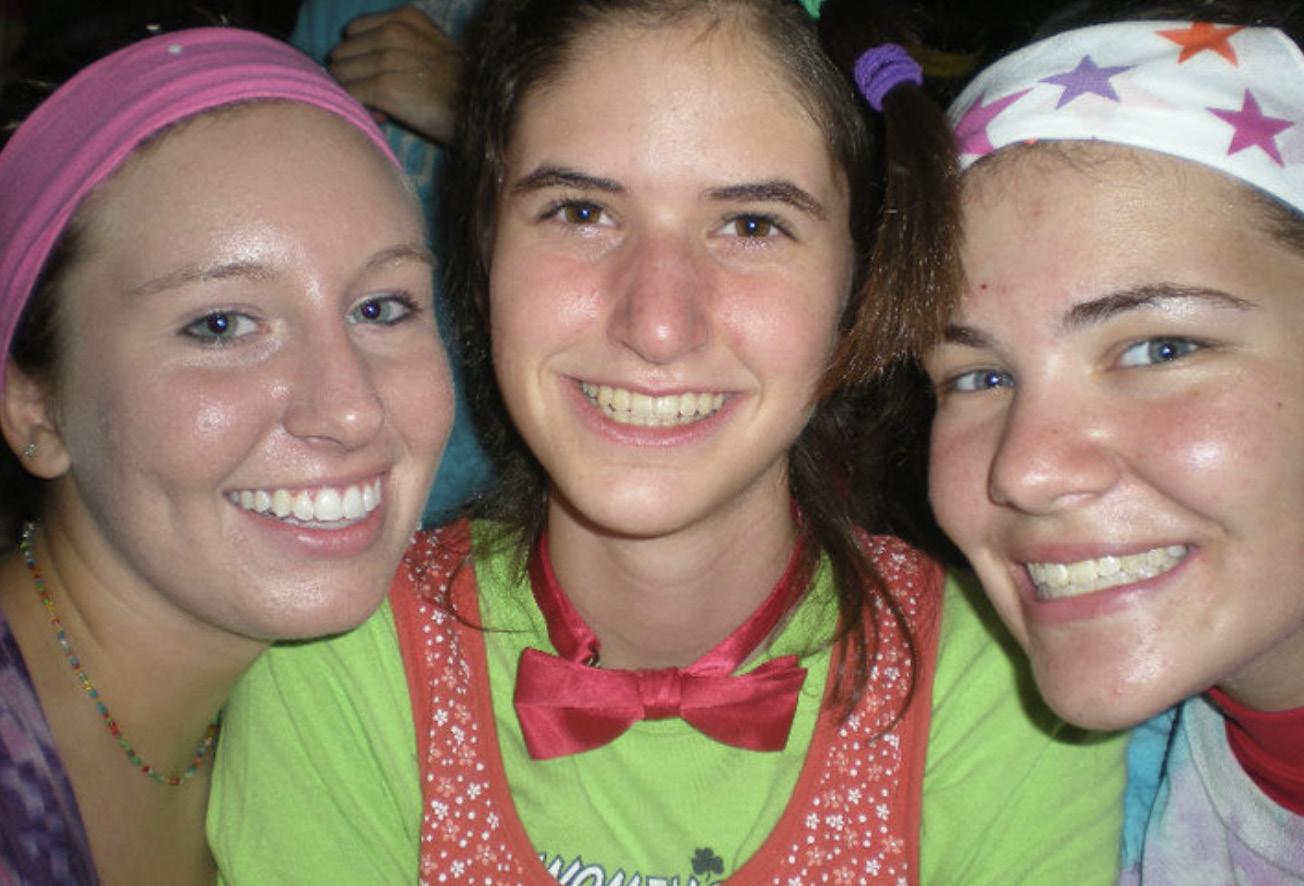
While homecoming is an important week for high schools across the country, every school picks up their own traditions throughout the years.
Intercultural Life Program Specialist and alum Alexis Irish (‘15) still remembers homecoming -not for the dance but for the week.
Irish recalls texting friends to plan outfits for dress-up days. For the last day of the week -- blue and gold day -- she and her friends went all out.
“We used to just pull up to JoAnn Fabrics and be like, give us every bandana, every blue and yellow bandana you have,” Irish said.
While some things have changed since then, a lot is still the same. She remembers how the endof-week tradition was always a highlight.
“Storming the field was always my favorite thing ever,” Irish said.
She recalls the spike of adrenaline when you finally fall down while storming the field and the search for lost phones afterwards.
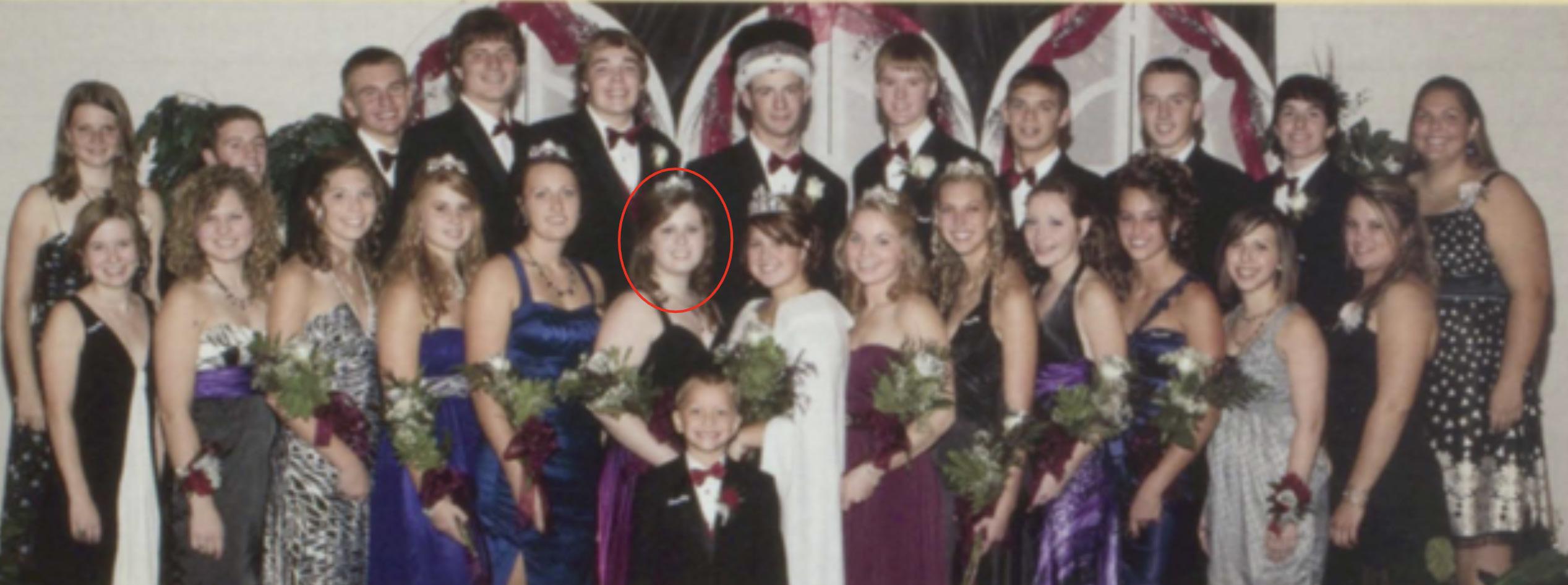
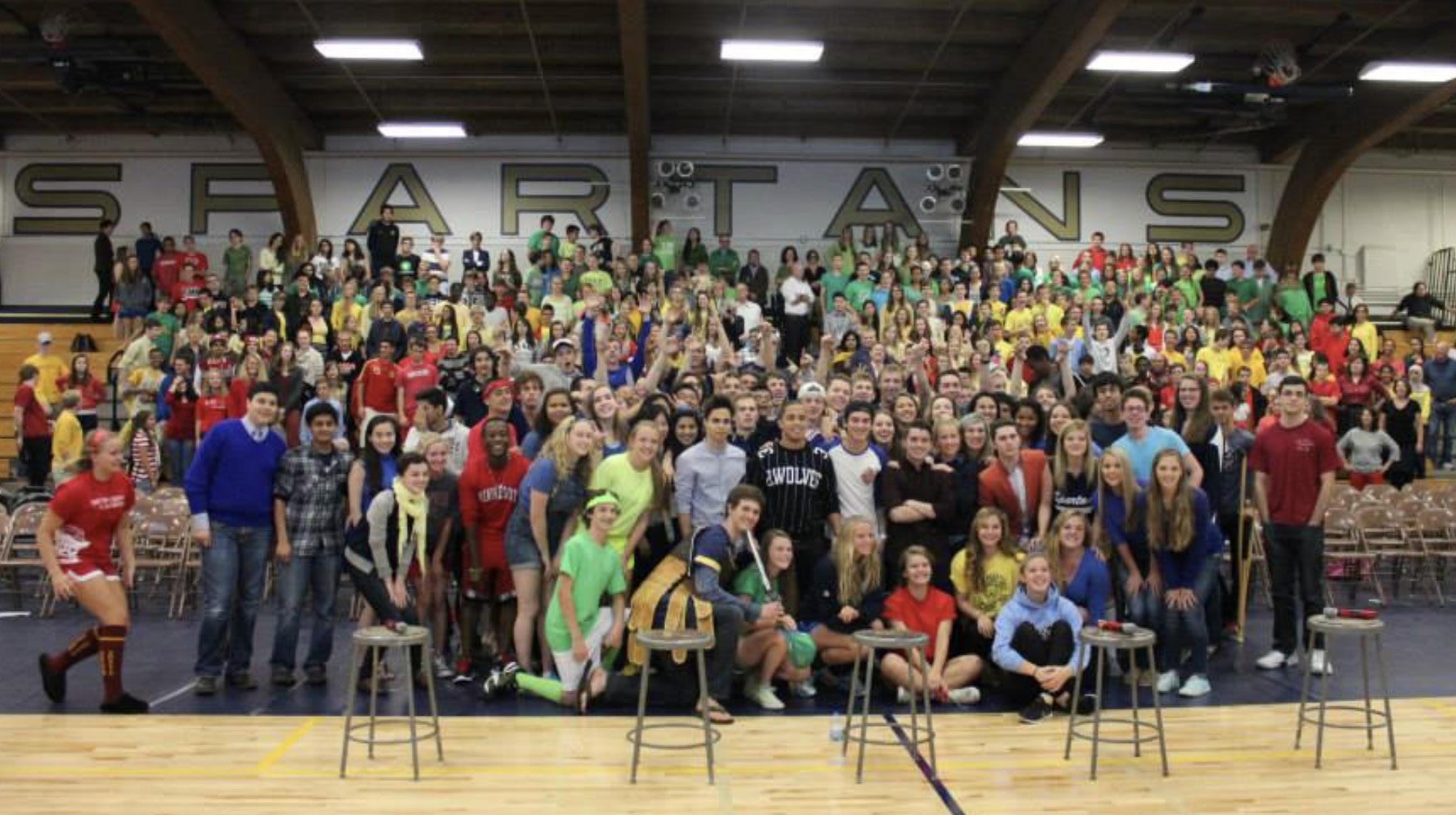
bers a musical performance during Monday’s kickoff assembly to get the school ready for an exciting homecoming.
The 2013 performance in the gym is still talked about today by the class of 2015. The boy band Midnight Red serenaded the school with their single “Take Me Home” as well as a cover of Rihanna’s “Diamonds.”
Storming the field was always my favorite thing ever.

Not only does Flom-Staab remember this assembly, but Irish still has songs from them on her Spotify playlists.
“Homecoming court was always held the Monday night of homecoming week. Afterwards, the group took a Hummer limo to dinner,” Mullen said.
The week was filled with themed dress up days and homecoming spirit fun. Central’s traditions included a midweek girls football game.
“Juniors vs. seniors, seniors always won,” Mullen said.
The height of Central’s festivities began on Friday with the homecoming parade. Although the parade was canceled due to bad weather during Mullen’s senior year, the school didn’t hesitate to take to the hallways to celebrate instead. The week came to a close with the homecoming football game, followed by the dance.
Homecoming is not only an exciting part of the school year, but it is also a chance to make great memories that even teachers will look back on and smile.
German teacher and alum Madeleine Flom-Staab (‘15) remem1 3 2 4
Randolph campus librarian Cat Mullen attended Central High School and was always excited for homecoming. Homecoming court, a group of students selected to lead school festivities, kicked off homecoming week.
Traditions in the past were similar to homecoming traditions now, and the general feeling and excitement surrounding homecoming endures.
WHAT’S YOUR FAVORITE HOMECOMING MEMORY?
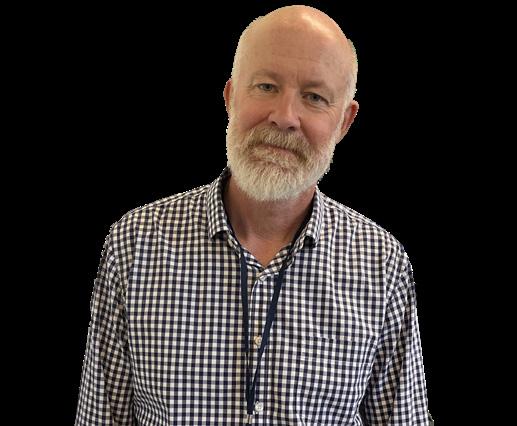
“
We had a homecoming parade at my large public high school where we did a parade through town and we got to throw candy for all the little elementary school kids.
history department chair Ben Bollinger-Danielson
“ I don’t know if it’s a favorite one, but when I got to high school, I was four foot eleven ... So I was this tiny guy in a tiny suit, and I think I looked a little ridiculous, but, you know, made it through it and had a good time.
science teacher Joseph Martin


Instead of wearing cute dresses, they dressed up as ... a theme ... I don’t remember what the boys wore, but I just remember one boy was wearing this furry caveman outfit. So I dressed up as a rock star for homecoming.
science teacher Christine Schwichtenberg
I’m not much of a dancer, so it was a little nerve wracking at first, but it was again, another social chance, just to connect with friends and hang out ... I don’t remember too much detail, which is kind of interesting, but overall, fondest good memories.
science and engineering teacher Scot Hovan

RUBICON - SEPTEMBER 2025
PEONY STEELE THE RUBICON
Life is about learning, experiencing and appreciating. To understand and live out these aspirations, we need to come out of our shells and do things outside of our comfort zone.
One of the most challenging obstacles I’ve faced, something truly outside of my comfort zone, has been engaging in simple, everyday conversations.
I don’t mean that I’m incapable of speaking to strangers or holding a conversation, but the difficulty lies in unsolicited interactions with people I don’t know at all. To overcome the anxiety that comes with these unexpected encounters, I had to confront them head-on.
During an evening stroll, while enjoying the fresh air with music playing in my headphones, I passed one couple who I
was particularly curious about. My sole interactions with this couple are mutual waves and smiles as one of us drives in and out of the neighborhood. I decided it was the perfect time to swallow my nervousness around unprompted conversations.
What began as a simple moment, a pause during my walk, turned into a surprisingly uplifting exchange. I stopped the young couple and initiated a conversation about topics that felt safe yet meaningful.
It was nerve-wracking if I’m being honest, because I didn’t know what to expect. My cheeks got hot and I stumbled across some words.
But to my relief, they welcomed the approach warmly, asking questions about my life, my family and my goals. In return, they opened up about their own experiences, sharing stories about their children and careers.
What struck me most was not just how natural the conversation became, but how human it felt. In those five to seven minutes, I saw how a genuine connection can be formed from nothing more than a willingness to speak.
Why conversations like these scare me so
much, especially if I am the one initiating them, derives from a fear of rejection and, maybe even more so, a fear of connection.
There’s a strange vulnerability in allowing someone to see me beyond the surface. It means letting go of the control over how I’m
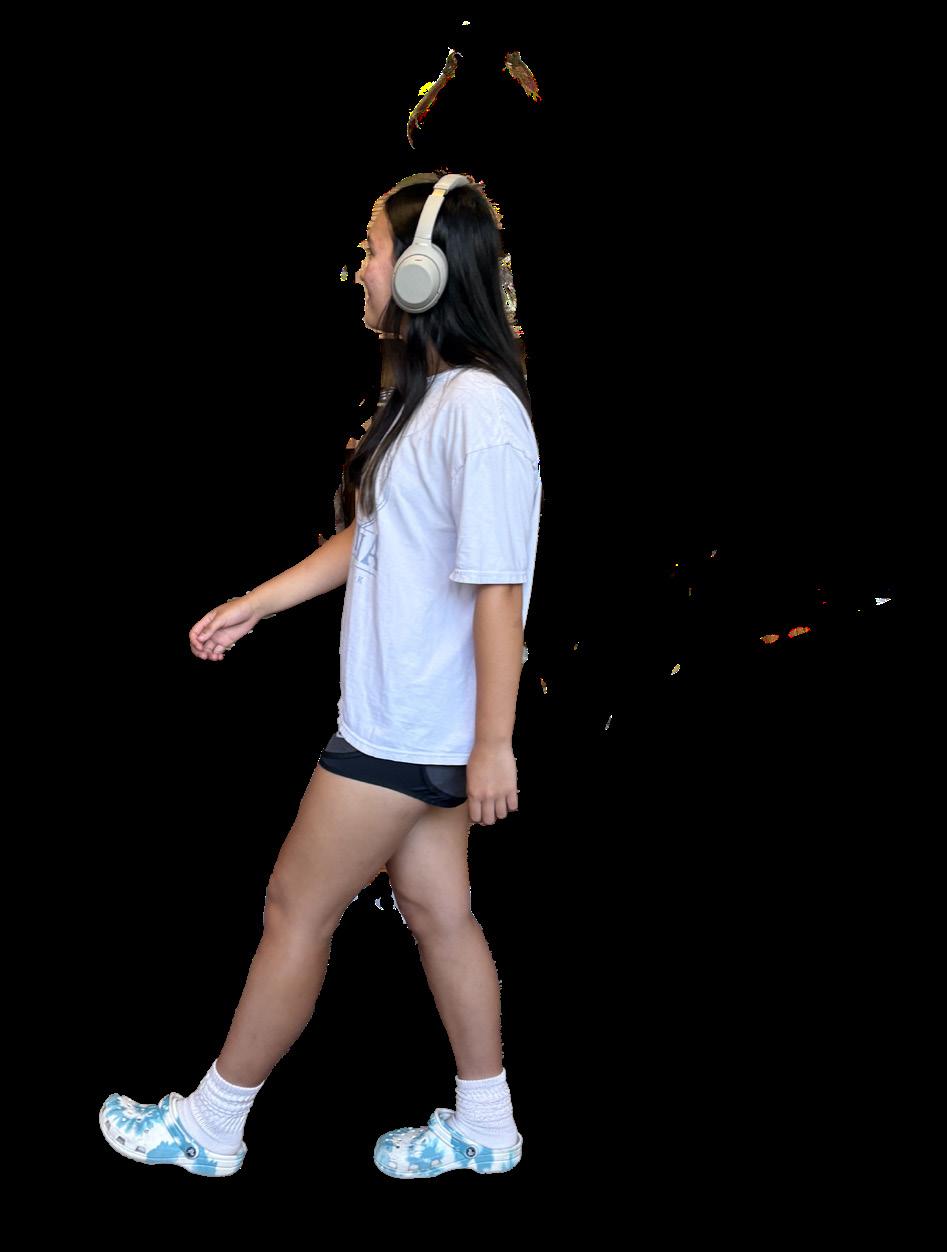
-ELEANOR ROOSEVELT
perceived, and opening myself up to the risk of being misunderstood or judged. But it also creates the rare chance to be genuinely seen.
Standing there, talking and listening, made me realize that most people are just as open to connection as I am. They are simply waiting for some-
one to take the first step. The realization didn’t erase my fears overnight, but it helped me see that not every interaction has to be over-thought. Sometimes, reaching out is enough. More often than not, people meet you halfway.
WYNTER FEINER
THE RUBICON
Starting at age three and making her way up to first seed varsity in seventh grade, ninth-grader Sophia Wenburg will begin her third year on the varsity Alpine Skiing team in the winter.
Wenburg started racing at Buck Hill at the age of five, just two years after she learned to ski. Now, at 14, she has stayed loyal, competing for Buck Hill Racing Team for nine years.
Wenburg, younger than her opponents, excelled in her seventh-grade year, crushing the courses and advancing to state in eighth grade, where she placed in the top 15 among competitors.
Age, however, was a mental obstacle for Wenburg. “It was really challenging because the people you’re racing are between the ages of 13 and 18,” Wenburg said. “So when I’m 13 and I’m racing against kids who are a lot older, it’s just difficult because they have an advantage. They’ve been on the team longer, [and] they’ve skied longer.” However, Wenburg believes she has combated this hurdle. “[When racing, I] try to forget about [the age gap], I just try to
do good, and if I do good, the difference isn’t really there,” she said.
Wenburg’s tactics were effective, securing her a feature in the Star Tribune’s high school sports results on Jan. 29, 2025. The story was about a notable victory she had in a conference race against a rival senior from Hill Murray who had taken gold at state in the 2024 season.
I like doing things by myself ... and I like to reach limits and go as fast as I can. “
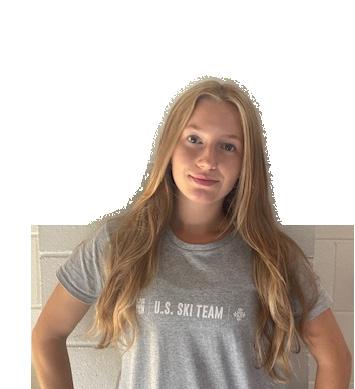
She defines this race as pivotal in her Alpine career. “It ended up making me really happy [even though] it’s just like any other race,” Wenburg said. Even on her Buck Hill team, Wenburg gravitates towards the older kids.
“I like to hang out with the older kids, to get better,” Wenburg said. “I’m friends with people who are older, just because I really want to be like them and beat them, and
whenever I do ... it feels like I achieve something.”
Her passion for Alpine skiing is fueled by competition and dedication. “I’m just a very competitive person, and I don’t really like team sports. I like doing things by myself ... and I like to reach limits and go as fast as I can,” she said.
For Wenburg, the sky is the limit, which has given her room to set goals like placing higher at state during her high school years and skiing in the Alpine Ski World Cup. “I set really extreme goals, because, if I don’t meet them, [I think] ‘okay, it was a reach’, but if I do, then that’s just awesome,” she said.
“Last year, I brought leadership to the team, even though I was one of the youngest on the team; it felt good to be representing the middle school in a high school varsity sport,” she said.
She looks forward to what her high school career will bring. “I hope to bring teamwork to school athletics, and although skiing itself is an individual sport, you’re on a team with your friends, and you do everything as a team.” Wenburg looks forward to the 2025-2026 season with high hopes of placing in the state race once again.
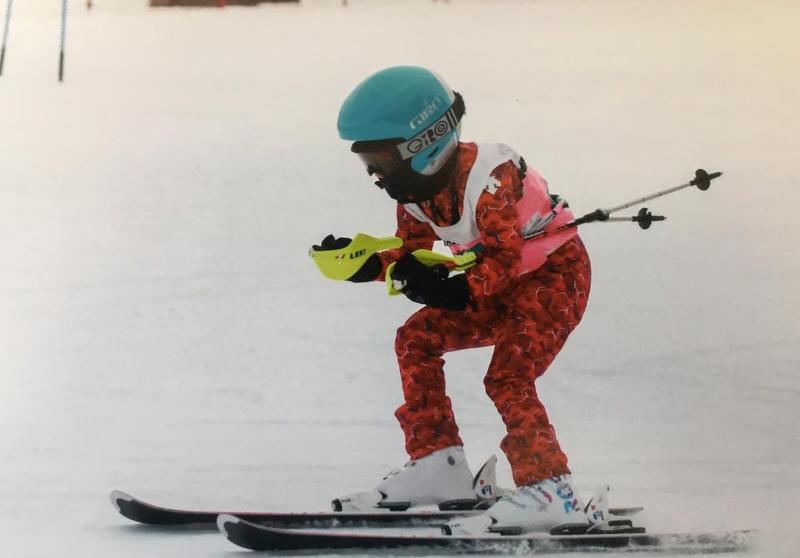

ARIELLA KIM THE RUBICON
As a spectator, it’s easy to focus solely on the athletes, but what happens behind the scenes can be crucial to a team’s success. Student sports managers are key aspects of every sports team. Not only do they make sure a team has all the resources it needs, but they also help ensure that
a sense of community is formed between the players. The dedication of student managers often goes unnoticed, but can be the backbone of an organized and healthy team environment. All student sports managers, goes beyond logistics and helps create a positive environment. Each of the student fall sports managers contributes to their teams in meaningful ways, whether that’s

The cross country team relies on the support of team manager Tallulah Dogwill, who brings eager energy to meets and keeps things organized for the program.
TALLULAH DOGWILL CROSS-COUNTRY
“I help to foster an enthusiastic and engaging environment in the hopes of people finding a passion for cross country,” Dogwill said. She focuses her support on younger players to make them feel welcomed on the team and to give them someone to talk to. “I collaborate with the players mainly through the captains and coaches, but make an extra effort to talk to the younger players as well since we have many middle schoolers on the team,” she said.

ALI MANZOOR BOYS SOCCER
Boys varsity soccer manager Ali Manzoor enjoys collaborating with team members. “My favorite part of being the soccer manager is talking to all of the players. I also enjoy watching my friends play,” he said. Manzoor was encouraged to become the manager by the boys varsity soccer captain, and ended up enjoying the new involvement in the team. “I became sports manager for soccer because Patrick approached me about it and I thought it would be a fun new experience,” he said.

For a second year, Raina Heidkamp is the girls tennis manager. Heidkamp along with sophomore Henry Cammack are there to take stats, fill in at practice, or be supportive whenever the team is playing. If it is during practice, Heidkamp will be there playing music and, at games, coordinating all of the lineups and stats. Heidkamp said, “I love being able to connect with coaches and players on the team ... and always being able to support the team and have fun.” Whether its playing music or hitting tennis balls, to being a helping hand during games, Heidkamp is there with a spare raquet and a smile.
through gathering statistics for coaches, setting up tracking systems for each of the players or bringing school spirit to every event. Even though their work happens behind the scenes, they’re an essential part to what makes each team run smoothly.

Eddie Sofen, SPARKS swim and dive manager, joins the team with enthusiastic energy. Sofen is both a swimmer and a diver for the boys team so his experience is beneficial for this role. He goes, along with two others from the Highland Park co-op, to every meet to take stats and time each race, which is helpful for each athlete to keep track of their progress. He said, “I like to watch a swimmer develop their skills and be happy when they do well in a meet. When I witness that, it’s really nice.”

If Laura Kimmel and Sam Galarneault, the varsity volleyball team managers, could be described in one word, it would be “commitment.” Kimmel and Galarneault help organize equipment, keep track of player stats and contribute to the positive culture of the team.
“Sam and I help out with drills during practice, we help shag and hit balls, sometimes we step in if they need extra players or if someone needs a partner,” Kimmel said. “We also decided to bring back the sister program.” The sister program is a way for players on different teams to get to know each other and is also a chance to build community in the volleyball program.
Evy Sachs, the girls varsity soccer manager, wanted to stay connected to the soccer community, even if that meant staying on the sidelines. In her ninth-grade year, Sachs planned on joining the team but had a knee injury from ski racing that prevented her from playing. Sachs played when she was little and loves watching the sport, so as a way to still be involved, she decided to become a manager and has stuck with it ever since.

“I love talking with players on the bench and getting to support the team from the sidelines,” Sachs said. “It’s also a super awesome way to spend time with my friends outside of school and cheer them on. GVS has always been a super fun and energetic team that I love spending time with.”
YASMIN KHAN AND SENETNEB THEBA RUBICONLINE
What does the Spartan varsity volleyball team do as pre-game rituals to prepare themselves before a game? Does it impact them positively or even make a difference. Watch Louise Mahoney a sophomore on the teams take on pre-game rituals to find out. Hear answers to:
Q: Do you have any pre-game rituals/superstitions?
Q: Do you have any team tide pre-game rituals?
Q: Do you eat anything special before a game?
Q: Do you have a go-to pump-up song before games?
Q:Is there a cheer that get everyone hyped?
Q: Do you think pre-game rituals help you game/attitude?
Q: Whats you favorite memory tied to a pre-game ritual?
Q:If you could invent a new ritual, what would it be?
Q: How does the team work together to deal with nerves before a game?
Scan
to


THE RUBICON - SEPTEMBER 2025
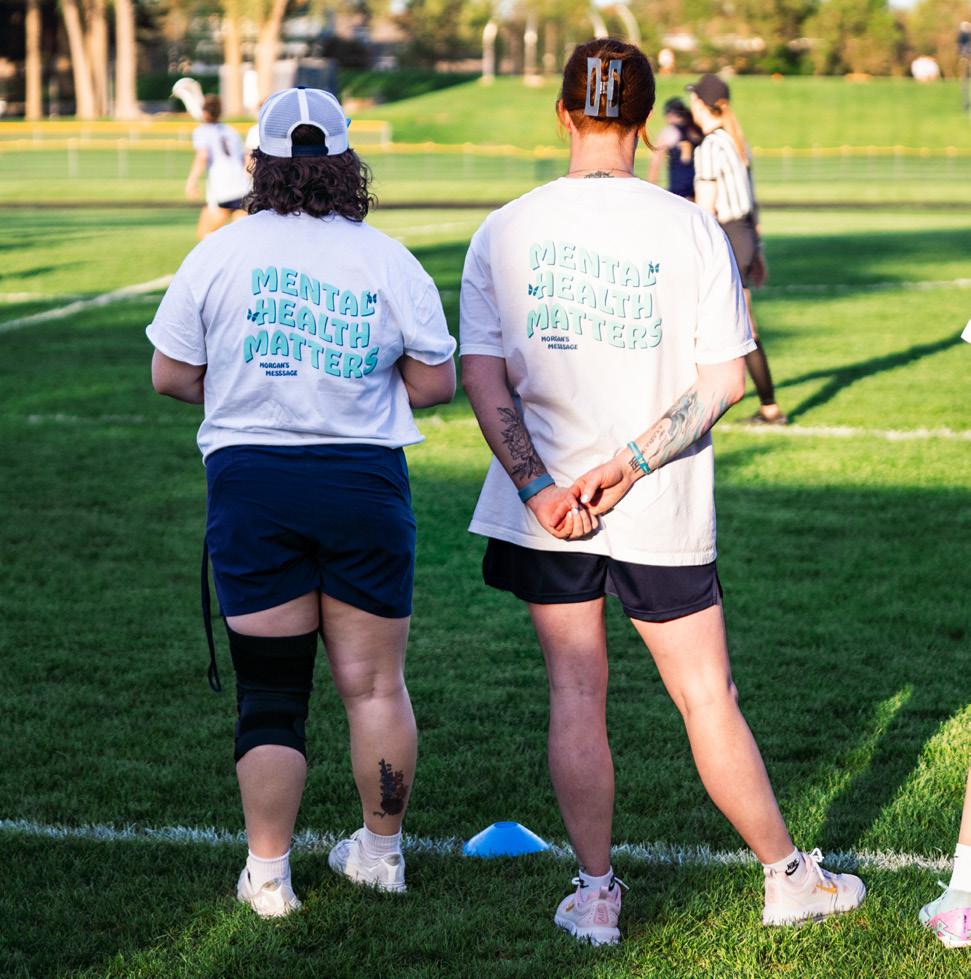
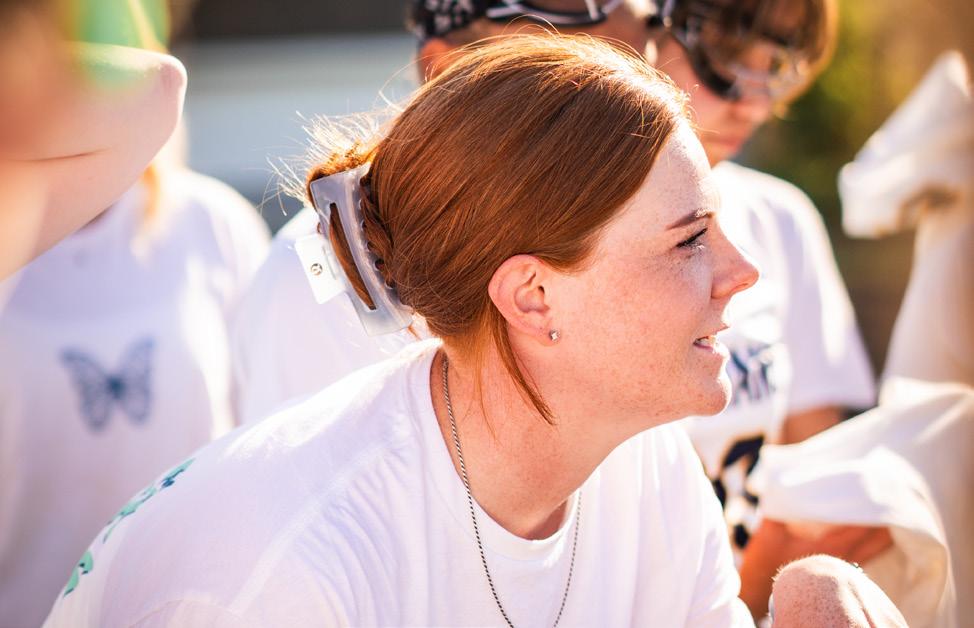
More see you later than goodbye: Tvedt leaves for director job; will remain on coaching staff
STEELE THE RUBICON
For years, Taylor Tvedt has been involved in various aspects of the athletic community. She has filled roles such as a physical education teacher, middle school and lower school athletic director, and girls lacrosse head coach.
She has decided to embark on a new journey in her career in athletics by accepting a job as an assistant athletic director at White Bear High School. Paul Moyer, upper school athletic director, believes Tvedt’s experience in athletics is already solid. “She already has a strong background in it, but this will be just the next step in her journey to help her get to where she wants to be,” he said.
One of the main aspects players and coworkers will miss about Tvedt is her presence at school. Her strong athletic expe-
riences have led her to be an excellent communicator in a professional and social setting. But more than that, her presence brought a sense of calm, leadership and reliability. Tvedt has a unique ability to connect with people across all areas of school life.
She’s really supportive, and it’s clear that she just really wants the best for the team, and she’s willing to go out of her way to help players individually. “
ninth-grader Avery Dayton

Moyer believes people will miss simply having the opportunity to inter-
act with her, describing Tvedt “as an educator, as someone who’s been here for a long time and as someone who understands SPA.”
Lacrosse player Avery Dayton also feels that Tvedt’s time at St. Paul Academy and Summit School enabled an extra layer of connection where they could connect on a more personal level. “I remember when I was in eighth grade last year, I would always go talk to her during quiet study,” Dayton said.
Lacrosse player Maggie Sampsell-Jones also understands the benefit of seeing Tvedt in person during the school day. “I think it opened the door for a lot more direct and vulnerable communication,” she said.
Despite leaving her role as the middle and lower school athletic director, Tvedt will continue to coach girls lacrosse, where she is admired by
the team. “She’s really supportive, and it’s clear that she just really wants the best for the team, and she’s willing to go out of her way to help players individually,” Dayton said.
As for filling her shoes, students and coworkers hope candidates will have Tvedt’s experience as a student-athlete, coach and administrator. Each institution fosters its own culture, and Tvedt understands that. “Her experience is invaluable and, frankly, not replaceable,” Moyer said.
Tvedt’s departure marks the end of a meaningful chapter, but her impact will be felt long after she’s gone. Her leadership, support and unwavering dedication have left a lasting legacy in the athletic community, one built on connection, trust and growth. This growth is now being reflected in her taking the next step in her career.
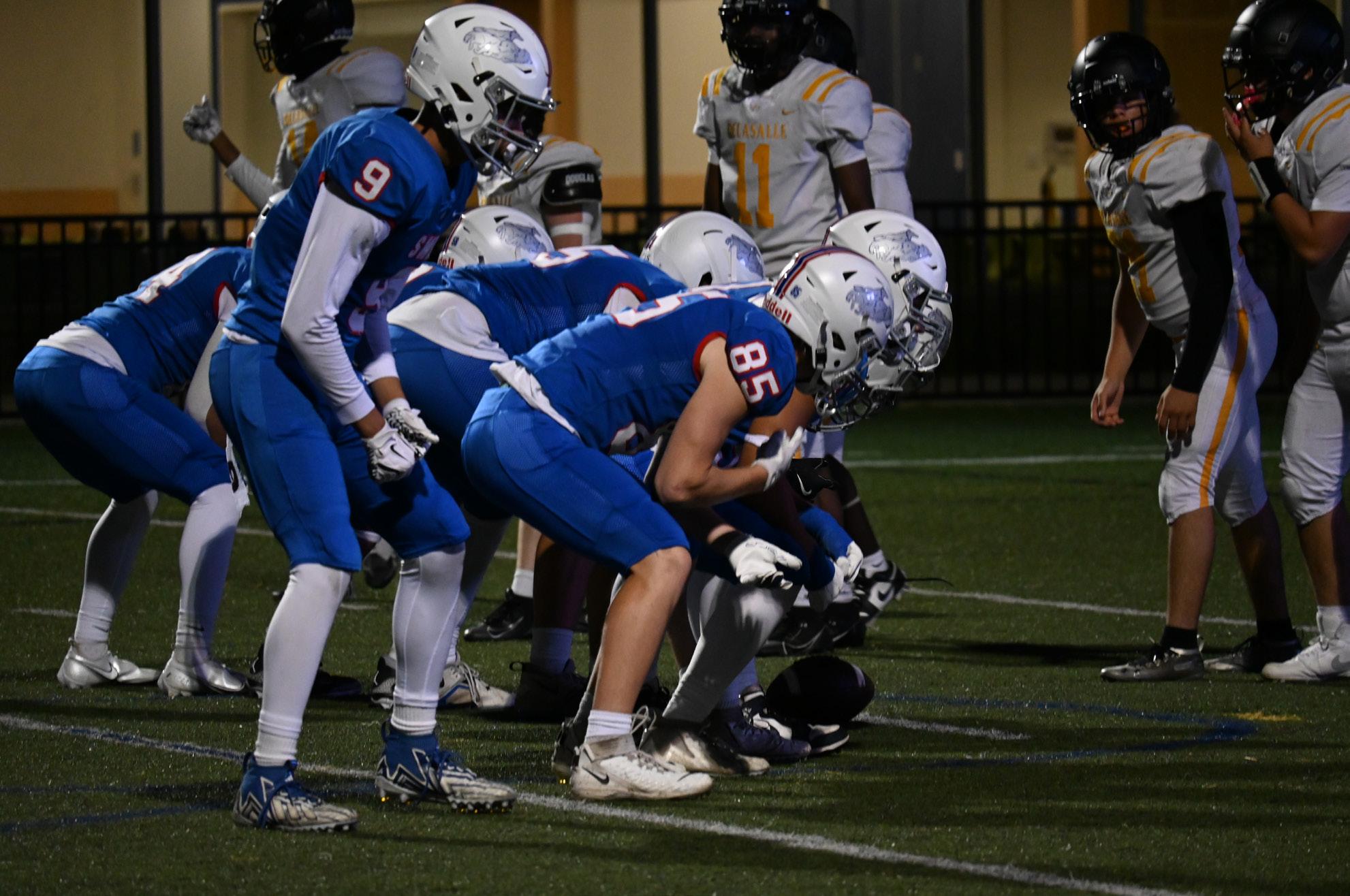
LINA ABID THE RUBICON
With four schools, 19 coaches, and three wins under their belt, the SMB Wolfpack has had a strong start to their season. This summer, the team was introduced to a coaching staff that had undergone a near- complete rearrangement, including new specialized coaches for each position.
Linebacker Bennett Sauer is optimistic about what the new coaches have accomplished. “This year is a little more tough on us,” he said, “but so far, it’s been a pretty good thing … We’re looking really good this year.”
With the team under new coaching, Sauer hopes for more wins to come of the season. Introducing new plays and assigning players to new positions are just a few of the ways that quarterback coach Bryan Cupito has worked to make that happen.
There were many new people for the Wolfpack to meet when the coaching staff joined the team over the summer, but for some seniors, there was a familiar face among them. Cupito has returned to coaching the Wolfpack after being with the team two years prior. In that time, he coached at Hopkins High School.
“The receivers coach came with me, from Hopkins, and then the defensive coach, he came. He’s coached
with me forever,” Cupito said. “Those are people that I’ve known for such a long time, it just made it an easy fix, bringing us all back together, making it fun.” Coming back to the team, Cupito noticed a significant culture shift. “I only have two years ago to compare it to, but it’s 1000 times different, in a better way. A lot of the kids are a lot closer. They know each other. When you have four schools, it’s hard … you got to make all four schools kind of merge and feel like they’re one,” he said. Part of how he has helped facilitate the unity of the team is through connecting with each player on an individual level.
He’ll make sure you’re seen at practice and make sure not to skip over you, and ask you how your day is.

Linebacker Miles Coates Cush has felt this effort from his coach. “He’ll make sure you’re seen at practice and make sure not to skip over you, and ask you how your day is,” he said. As a sophomore on the team, Coates Cush had not met Cupito before. One thing he immediately noticed was Cupito’s drive to get the team winning.
“First impression, I thought he was scary, but he warms up. He just wants us to win as a team,” Coates Cush said. “I know, myself, 66 plays for offense and defense, each different, all with hand signals. So it can be hard at times, but they want us to win and they want us to be better.”
If there was ever proof needed to support the claim that “change brings growth,” the Wolfpack would be an excellent source. Striking a balance between competition and a positive culture and community will likely come naturally for the team as they continue to build relationships with the new coaching staff, as well as strengthen old bonds with each other and, for some, a familiar coach.
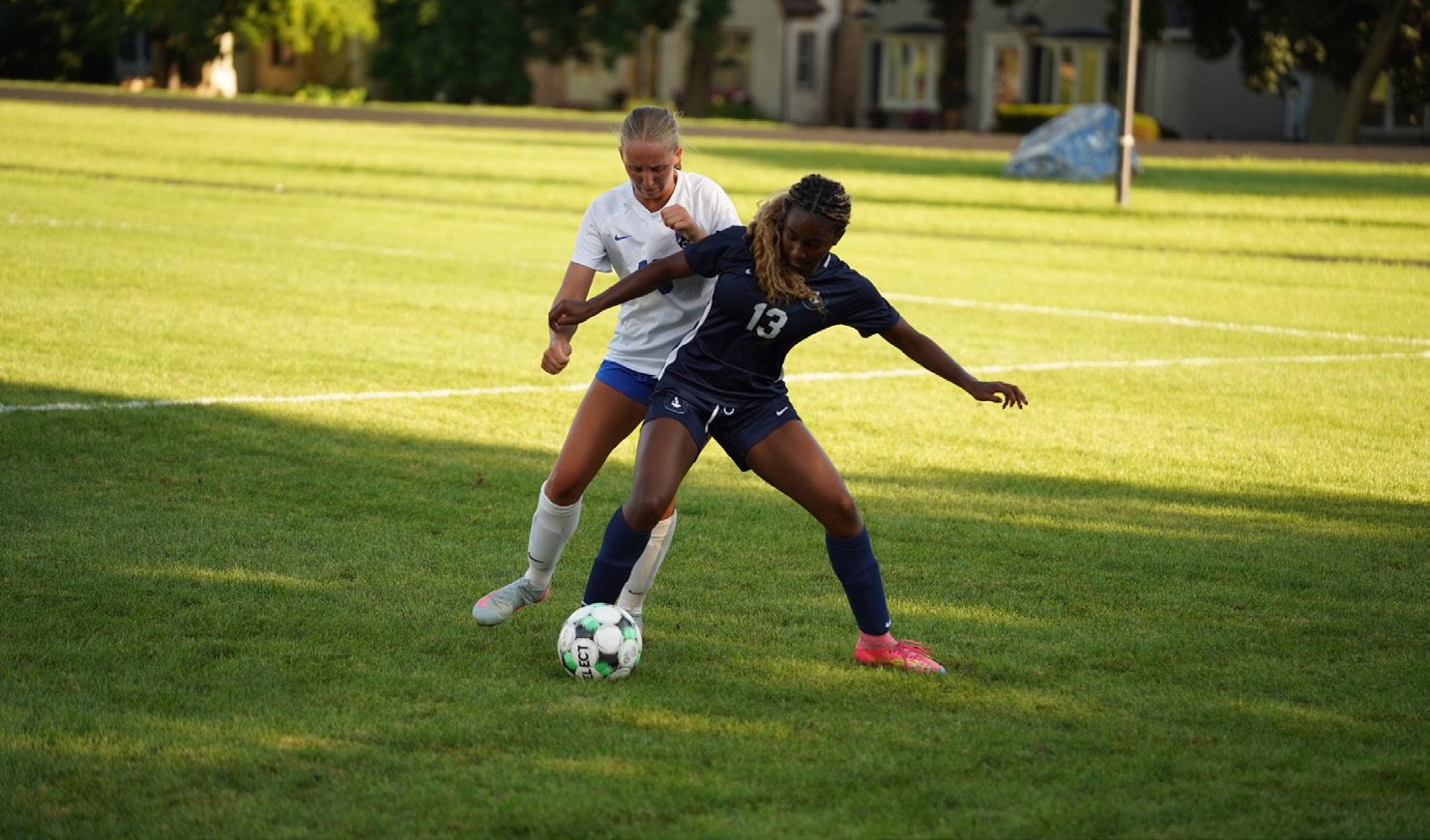
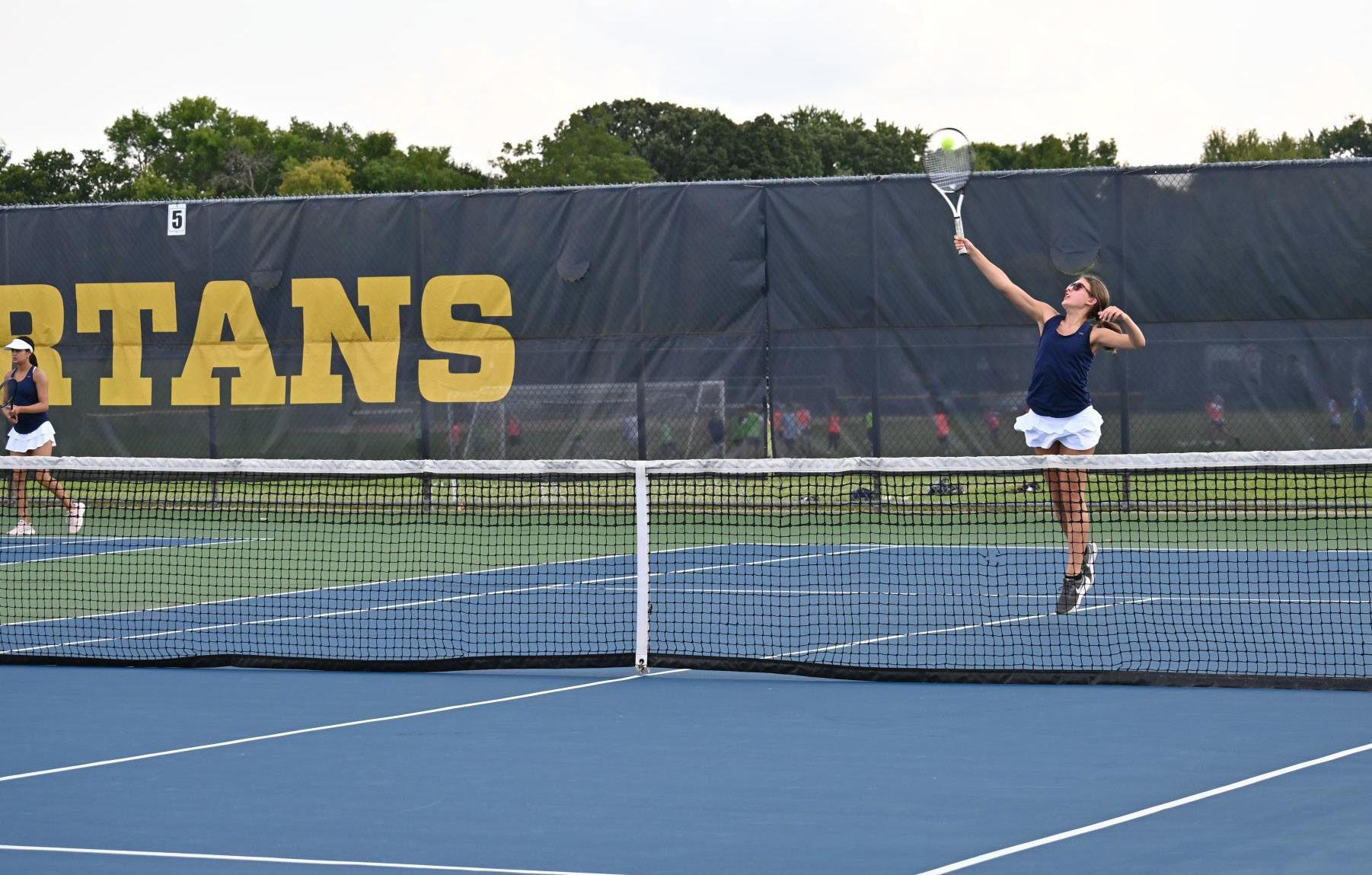
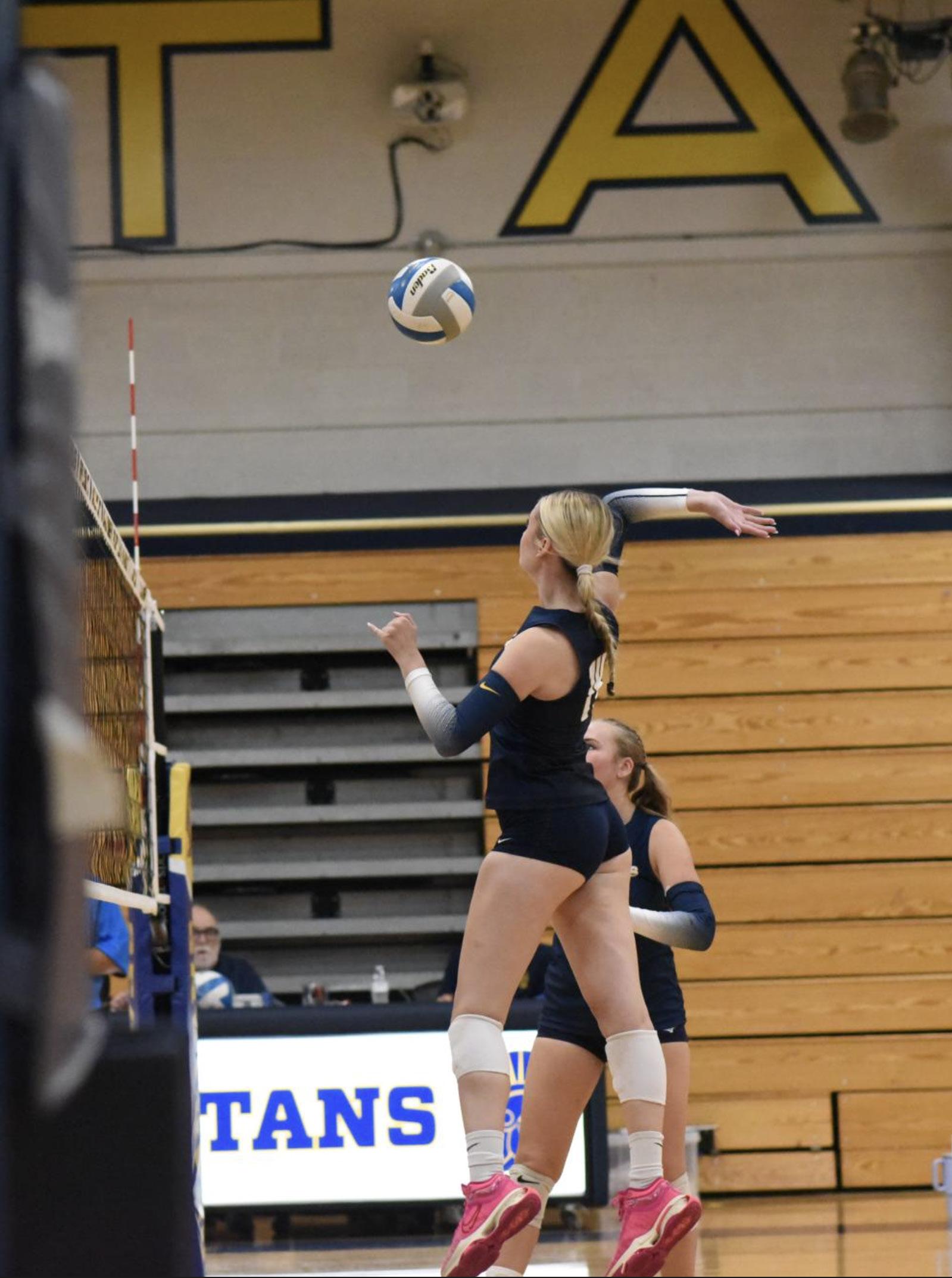
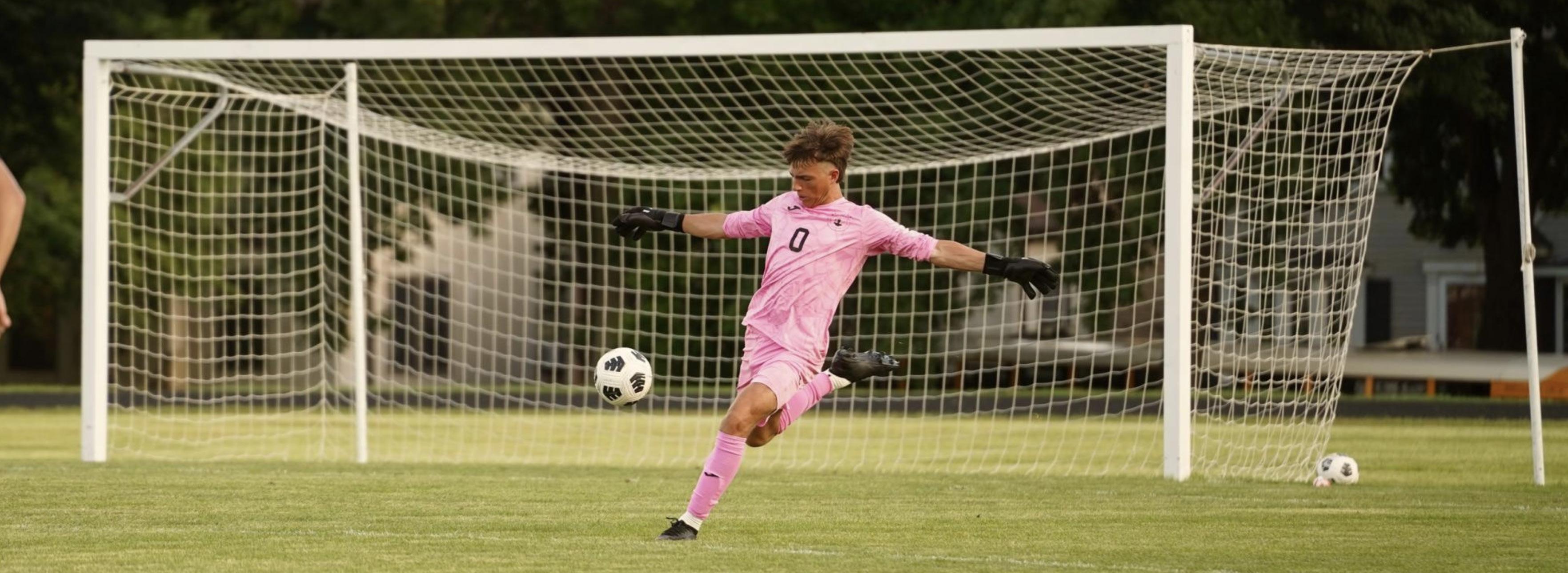

THE RUBICON - SEPTEMBER 2025
10. Ocean’s Eleven
Steven Soderbergh – 2001
The most commercial, flashiest and jazziest film on this list, Soderbergh’s heist-drama-thriller is endlessly rewatchable fun. Starring an impressively large cast of Hollywood stars, including Matt Damon, George Clooney, Brad Pitt, and Julia Roberts, it’s hard not to love “Ocean’s Eleven.” Two hours that fly by in an instant, it’s the peak of Soderbergh’s pizzazz-filled crime stories. The film remains the pinnacle of all blockbuster crime projects.

SINGULAR ANIMATION. A work that has been copied countless times, but not once matched.
6. Moonlight Berry Jenkins – 2016
The best screenplay on this list, Barry Jenkins’ masterfully realized “Moonlight,” is among the most emotionally impactful films ever made. A pure, simple, beautiful story that rides on the backs of two magnificent performances from Trevante Rhodes and Andre Holland. The film’s excellence has helped it escape the messy legacy of the messy 2017 “Moonlight” – “La La Land” Oscars mix-up, which a lesser film would not be able to do. The screenplay sets a new standard for well-written scripts in the 21st century; unfortunately, that standard has rarely been met since.

CRUISING CINEMATOGRAPHY. Although it’s a near perfect film, the strongest element is by far the cinematography by Dion Beebe and Paul Cameron.
2. Past Lives
Celine Song – 2023
Although Celine Song isn’t quite the promising director she was when the film came out, her debut film, “Past Lives,” is still transcendent. It offers a beautiful and intimate contemplation of love, fate, loneliness, and confronting your future while embracing your past. Its color palette, cold and grey with the occasional presence of a warm orange light, accompanies and develops the themes incredibly thoughtfully. Celine Song writes an excellent debut script with three incredible performances from Greta Lee, Teo Yoo and John Magaro to enhance it.
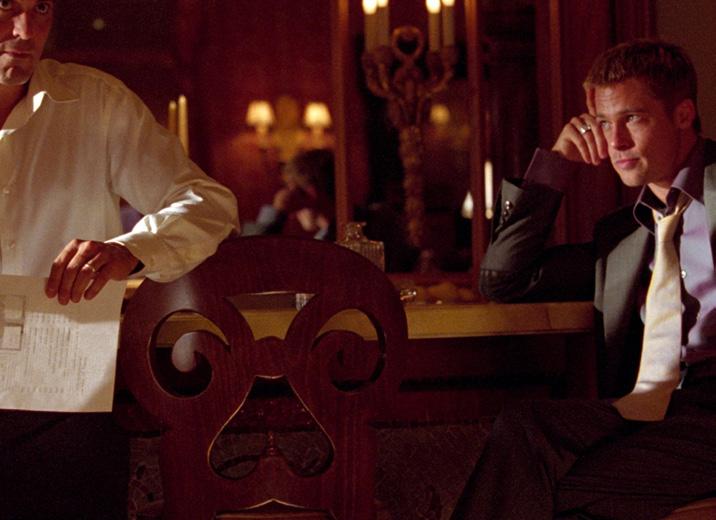
PIZZAZZ. Two hours that fly by in an instant, it’s the peak of Soderbergh’s pizzazz-filled crime stories.
8. Spirited Away
Hayao Miyazaki – 2001
As the only animated film on this list, “Spirited Away” is the go-to “great” animated film for most critics. But the movie more than deserves its acclaim. A beautifully rendered, complex, handdrawn coming-of-age story, there’s something for everyone to love in “Spirited Away.” A work that has been copied countless times, but not once matched, there will never be another film like it. The greatest movie from Japan’s greatest animator, it’s easy to see how it finds itself a spot on this list, and on so many lists over the years.
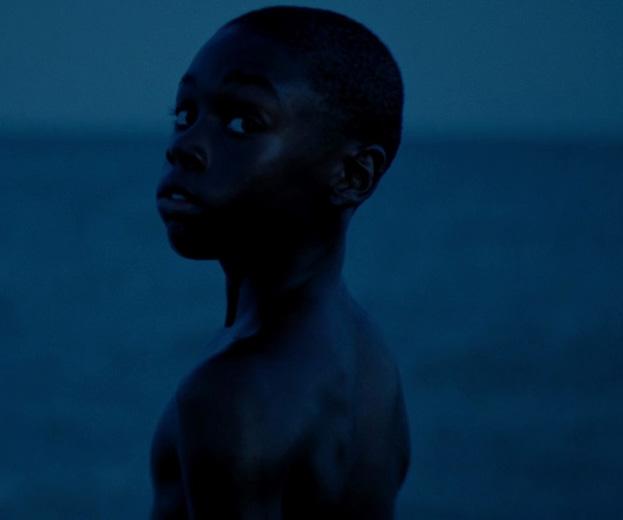
SIGNIFICANT SCREENPLAY. The screenplay sets a new standard for well-written scripts in the 21st century.
4.Collateral Michael Mann – 2004
One of the hottest takes on this list, and the most underrated action-thriller of the quarter-century, Michael Mann’s “Collateral” is an incredibly thrilling cinematic experience, the likes of which we haven’t seen since. Starring Jamie Foxx at the peak of his powers and pre-godcomplex Tom Cruise, it features some of the most understated acting on this list. Mann’s two-hour, digitally-shot, Los Angeles crime micro-epic is in brilliant conversation with the rest of Mann’s filmography, namely the marvelous “Heat.” An action-thriller that perfects both genres is rarely seen, so Mann’s work here has to be rewarded as one of the finest films of the 21st century.

SUPER STORYTELLING. “Past Lives” has an excellent level of patience within its storytelling that is rarely found in cinema today. It offers such a beautiful and intimate contemplation of love, fate, loneliness, and confronting your future while embracing your past.
9. The Girl with the Dragon Tattoo David Fincher – 2011
“The Girl with the Dragon Tattoo” is the most underrated film from masterful thrillmaker and writer-director David Fincher. As disturbing as they come, with plenty of graphic gore and sexual violence, the film isn’t an easy watch, but it is an important one. Another one of Fincher’s vile crime stories, and narrowly his best, there are few films as discomforting to watch as this one.


7. Marriage Story
Noah Baumbach – 2019
Noah Baumbach is one of the most consistent directors of his generation, but his peak clearly was with his masterpiece, “Marriage Story.” Coming right in the midst of a cinematically incredible 2019, “Marriage Story” features a powerful script and two legendary performances by two great actors: Scarlett Johansson and Adam Driver. The height of Baumbach’s themes of emotional isolation and social disconnection, and the perfect late-career role for both of its stars, “Marriage Story” could not have been more perfectly timed.
5.
Christopher Nolan’s masterpiece, “Oppenheimer,” is one of the most powerful films I’ve ever had the pleasure of viewing in a theater. The practically-made Trinity Test scene may be the best fifteen minutes of filmmaking on this list. There’s not much left to say about “Oppenheimer,” as it has been the subject of countless pieces of film criticism and theory for the past few years, but it cements itself towards the top of this list.

1. There Will Be Blood
Paul Thomas Anderson – 2007
This was the toughest choice to make, not because it’s not easily one of the best films of the quarter century, but because the decision between “There Will Be Blood” and three other Paul Thomas Anderson films (“The Master,” “PunchDrunk Love,” and “Phantom Thread”) was incredibly difficult. However, there’s nothing that compares to the sheer scope and power of “There Will Be Blood.” It is a nearly three-hour cynical American epic that is amongst the greatest films of all time, but still endlessly indebted to countless films that came before it. “There Will Be Blood” is a true masterclass of filmmaking, the greatest film from our greatest living director, and the best film of the past 25 years.

FIRST THOUGHT. Christopher Nolan’s masterpiece, “Oppenheimer” is one of the most powerful films I’ve ever had the pleasure of viewing in a theater.
3. The Handmaiden Park-Chan Wook – 2016
Another incredibly underrated feature, “The Handmaiden” is a masterpiece from South Korean genre maestro Park Chan-Wook—an intricately crafted tale of liberation, sexuality, deceit, love and nationality. Chan-Wook revels in the malice behind mankind’s every decision and distorts and twists the male gaze in a brilliant fashion. Every shot could be a beautiful photograph: a cherry blossom tree in a manicured yard, two women backed by a violet sunset embracing as they finally achieved freedom, a puppet and a handmaiden intersecting midair. These are all pictures Chan-Wook doesn’t just show us, but paints for us, letting the viewer sit in every frame.

THE RUBICON - SEPTEMBER 2025
WYNTER FEINER
THE RUBICON
A plethora of hidden gems in cafe form lie close to the upper school. At a maximum of 2 miles away from campus are Roots Roasting, Spyhouse Coffee and Quixotic Coffee, three easy and delicious grab-and-go coffee shops.
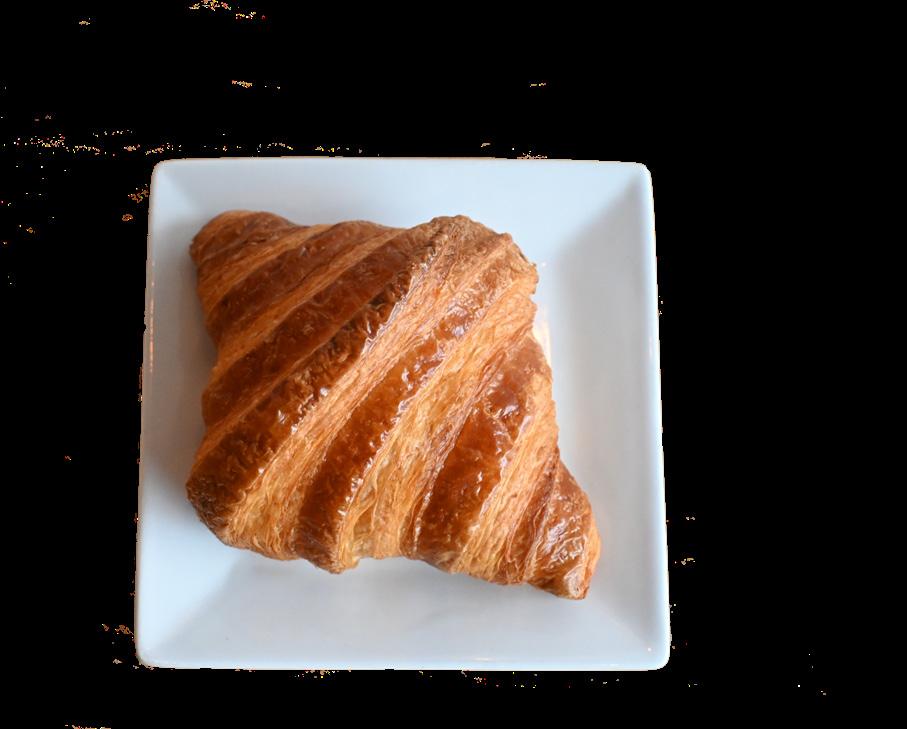
This month, I traveled to these local businesses to ask for the most popular pas -
Each cafe offered a wonderful selection of pastries and beverages. The shops also provided cozy and productive atmospheres, ready for customers to study by taking

Just around the corner from Highland Village is Quixotic Coffee, a specialty coffee shop with a rustic modern interior. The most popular item was the almond croissant, which was already sold out. Still in stock, however, was a large glimmering golden butter croissant. The pastry was originally sourced from Patisserie 46. This delicacy was light
RATING: 3.5/5
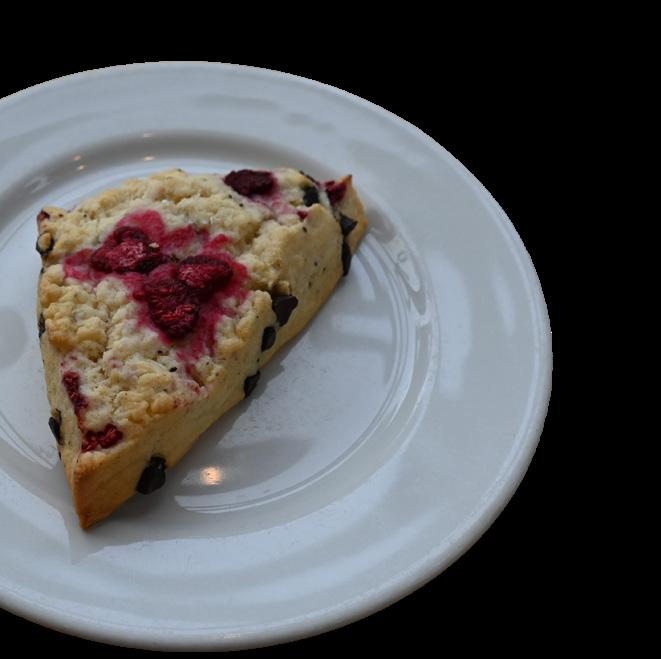
RATING: 4/5
and buttery with many layers, including a soft inside and a flaky and crispy outer layer. The employees were warm and offered to heat the croissant before serving. The croissant was sizable, with each bite containing a chewy inside and a crunchy outside. Even though the croissant was plain and classic, every bite was worth its reasonable price of $4.75.
Also within a five minute radius is Spyhouse Coffee’s Kouign Amann. The bakery offered a bright and vibrant atmosphere with rays of light cascading in through many large surrounding windows. The name Kouign Amann came from the Breton language and translates to “butter cake.” The item itself is a glistening golden color glossed in syrup that is sure to catch and reflect the shop’s natural lighting. The delicacy
was buttery and somewhat flaky, resembling a cross between a sticky bun and a croissant. Despite its croissant-like appearance, it was texturally heavy and lacked sufficient syrup to consistently enhance its flavor. The portion was fair but did not live up to its $6.23 price. The bakery itself is conveniently close to school and is sure to leave you satisfied for a grab-and-go breakfast.
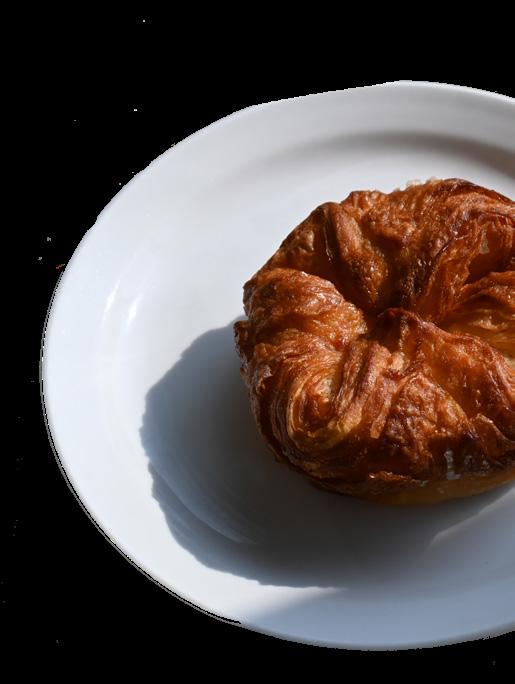
RATING: 2.5/5
Just a four minute drive away from the upper school campus lies Roots Roasting, a cohesively designed shop with a pre-industrial theme. The shop’s most popular item is a raspberry scone, topped with fresh raspberries and perfectly dispersed semisweet chocolate chips that complement the raspberries. The pastry was originally sourced from Brake Bread, a local bakery seven minutes away from school. The scone itself was rich and dense, hiding the chocolate chips and making it difficult to take in the flavor. The sweet overall lacked a pungent flavor as the raspberry flavor was only represented by the top of the pastry. The portion was generous and sold for the fair price of $4.40. Roots Roasting is a reliable detour for student and teacher breakfast endeavors.
EVIE GARDNER THE RUBICON
Most people self-identify as left- or rightbrained. Many who consider themselves leftbrained, with an affinity for music, often see themselves as humanities-aligned. But the math in music goes further than just counting beats or keeping rhythm.
Fractions of octaves, harmonizing intervals and the velocity of string vibration all influence what sounds good to the brain.
Music does not discriminate between leftand right-brained individuals, but those who enjoy it may be more mathematically inclined than they think.
Music revolves around the physics of sound. A string’s number of vibrations per second is its frequency. Frequency, measured in hertz, depends on four factors: string length, density, thickness and tension. The shorter a string is, the more vibrations per second it
will have, and the higher the note.
That knowledge applies not only to string instruments but also to singers. Middle and upper school choir teacher Tim Kraack said understanding sound can have positive effects on performers.
“Knowing the physics of sound makes people better musicians because you can understand why your tone sounds the way it does,” Kraack said.
The choral curriculum includes lessons to help students amplify their voices and improve their singing.
The math behind harmonization and octaves lies in division. A musical interval, or octave, is created by doubling the frequency of a vibrating string. Multiplying a frequency by an integer creates intervals, which can stack on top of one another to form a harmonic series. Scales are made by taking these intervals and bringing them into the same octave.
“Wavelengths line up on top of each other, the neatest wavelengths being the same note, and the next neatest lining up on octaves, and then you keep dividing. Then it starts to get less neat as you go,” Kraack said.
I’ll be playing something and eventually I’ll play it enough that it’s memorized. “
junior
Junior Aldegundo Brenneman, who recreationally composes music, usually does not think much about the physics behind it. For most people, it is more intuitive to listen to what sounds good.
“I’ll be playing something and eventually I’ll play it enough that it’s memorized,” Brenneman said. “Then I’ll write down the basic melody, maybe one bar, and then I would stack a set melody and write that down.”
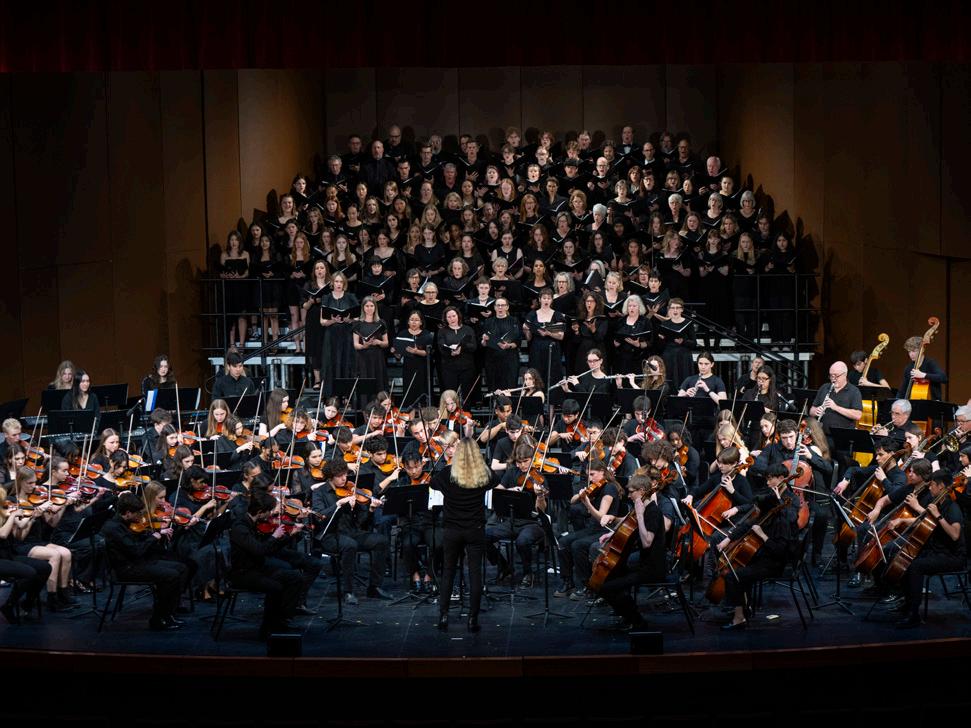

The same principle explains clashing harmonies. Chords that sound bad resemble clashing waves.
“When the wavelengths don’t line up on top of each other, you get interference, and they start to scramble a little bit,” Kraack said.
Kraack said he often takes a similar approach. While geometric formations can help explain why notes sound the way they do, oftentimes it is easier to realize them by ear.
HARMONIC HALL. The spring concert showed not only the large role music plays in life, but also the importance of a music hall with good acoustics. “Physics, for sure, can help understand how to create a good space for good sounds,” science teacher Joseph Martin said.
Aldegundo Brenneman implementing math in composition can lead to new musical possibilities.
“The more you compose, the more you can hear ahead of time what you want and find the notes that fit what you’re hearing in your head,” he said.
Music can sound beautiful regardless of whether someone understands the theory behind it.
But theory is what enables composers to create grand arrangements that seem almost magical, physics teacher Joseph Martin said.
“Physics and math can help you appreciate music in a different way,” Martin said.
While most people listen passively in the car, at the gym or while working, a deeper dive into a melody reveals its mechanics. Martin said
“You can make sounds that you did not know existed,” he said.
Music is often thought of as unrelated to math, and math’s role in the art form can be overlooked. In reality, music is a natural bridge between STEM and the arts, which are more connected than they may seem.
THE RUBICON - SEPTEMBER 2025
SUNDE AUBERJONOIS THE RUBICON
The inaugural Drake Gallery exhibition of the 2025-26 school year is finally here. The gallery opened Sept. 5 and features the work of alumni. Rather than focusing on one particular medium, this exhibit gives a space to all kinds of visual artistry, from photography to painting to textile craft.
David Ellis (‘83) is a photographer and director of motion videos, whose work gives the impression of respect and understanding for the beauty of the moment he has captured. His work focuses less on manipulating what’s around him to compose an image and more on the truth that is in observance, a truth that in itself is worth capturing.
Bruce Hook (‘85) is a photographer, sculptor and performance artist, although his primary medium has been photography over the last 20 years. His photographs are strikingly cinematic: vast black-and-white mountain ranges, skyscapes and still, silent bodies of water. Hook manages to skillfully represent worlds of different scales, a focus ranging from the minutiae of the natural world to its boundless horizons.
Isabelle McCormick (‘10) is a painting and drawing studio fellow at Teachers College, Columbia University. Her work draws from her research in many fields, including social psychology, gender studies and how we alter or perceive ourselves in certain spaces online. Her textured pieces fully use the canvas; many are almost reminiscent of assemblage. McCormick’s perspective on the infinite space between the person we put online and the person we truly are is a refreshing and relevant one.
Cathy Weyerhaeuser (‘75) has written and illustrated many nonfiction science books with Mountain Press Publishing. Her playful drawings often feature animals and work with patterning that resembles tactile fabric work. The whimsical world portrayed by her drawings hides within it a connection to nature, particularly fauna and its importance in our world.
“ Hook manages to skillfully represent worlds of different scales, a focus ranging from the minutiae of the natural world to its boundless horizons.

Anya Wild, class of 2005, works as a textile artist, painter and printmaker. The muted, earth tones she tends towards in her textile artistry and painting blend into a cohesive color scheme that leads the audience’s eyes easily through the visual mazes she creates. The eerie, Kafkaesque image motifs featured in her paintings are haunting and entirely fascinating.
This eclectic art collection will be available to visit in the Drake Gallery through September.

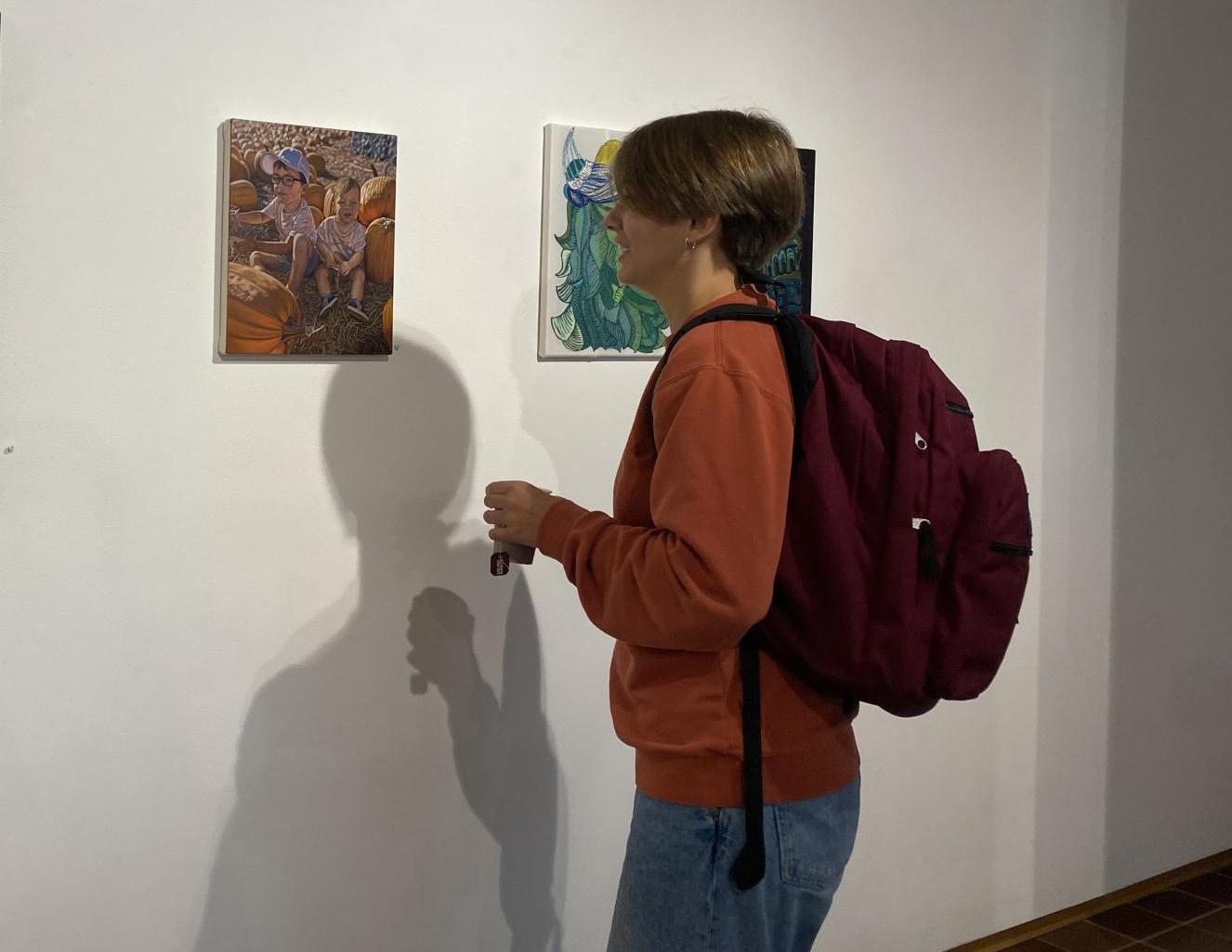

SYLVIA WESTRA THE RUBICON
When ceramics and sculpture teacher Daryn Lowman opened an email from SPA parent Zach Barlow, he did not expect to receive a Star Tribune press box. Star Tribune is in the process of retiring its press boxes as it is shifting to digital news and printing less papers. Barlow had bought three of the boxes, and wondered if the art department could put them to use.
“Initially I was skeptical, but then, over a period of a day or so, I thought, you know, this would be a really interesting way for students to begin to think about small scale design in an exhibition,” Lowman said.
The emerald green metal press boxes were previously put to work selling newspapers for the Star Tribune. They each featured a coin slot and a window, which opened when a paper was
purchased. The boxes are intended to be used as mini galleries to display the work of students in advanced art courses.
Each Advanced Art class -- 2D (painting and drawing), 3D (ceramics and sculpture) and photography -- will receive a box to display their art.
Seniors Kavita Deo and Nora Grande will be the first 3D art students to use the boxes to design their own sculpture display.
“Right now, me and Nora are collaborating ... and we’re trying to do under the sea vibes,” Deo said.
“We’re making little sculptures of different sea animals, and then also using some other materials from ... the design lab.”
Lowman wants his students to focus on making their art site specific.
“When you’re thinking about a site specific sculpture, you’re really thinking about the environment that something lives in specifically because of what is around it,” Lowman said.
The green Star Tribune logo will not be part of students’ designs, as Lowman plans to sand the boxes down, prime them and paint them white so students can have creative freedom on the entire box.
“I think we’re going to [probably] paint it blue,
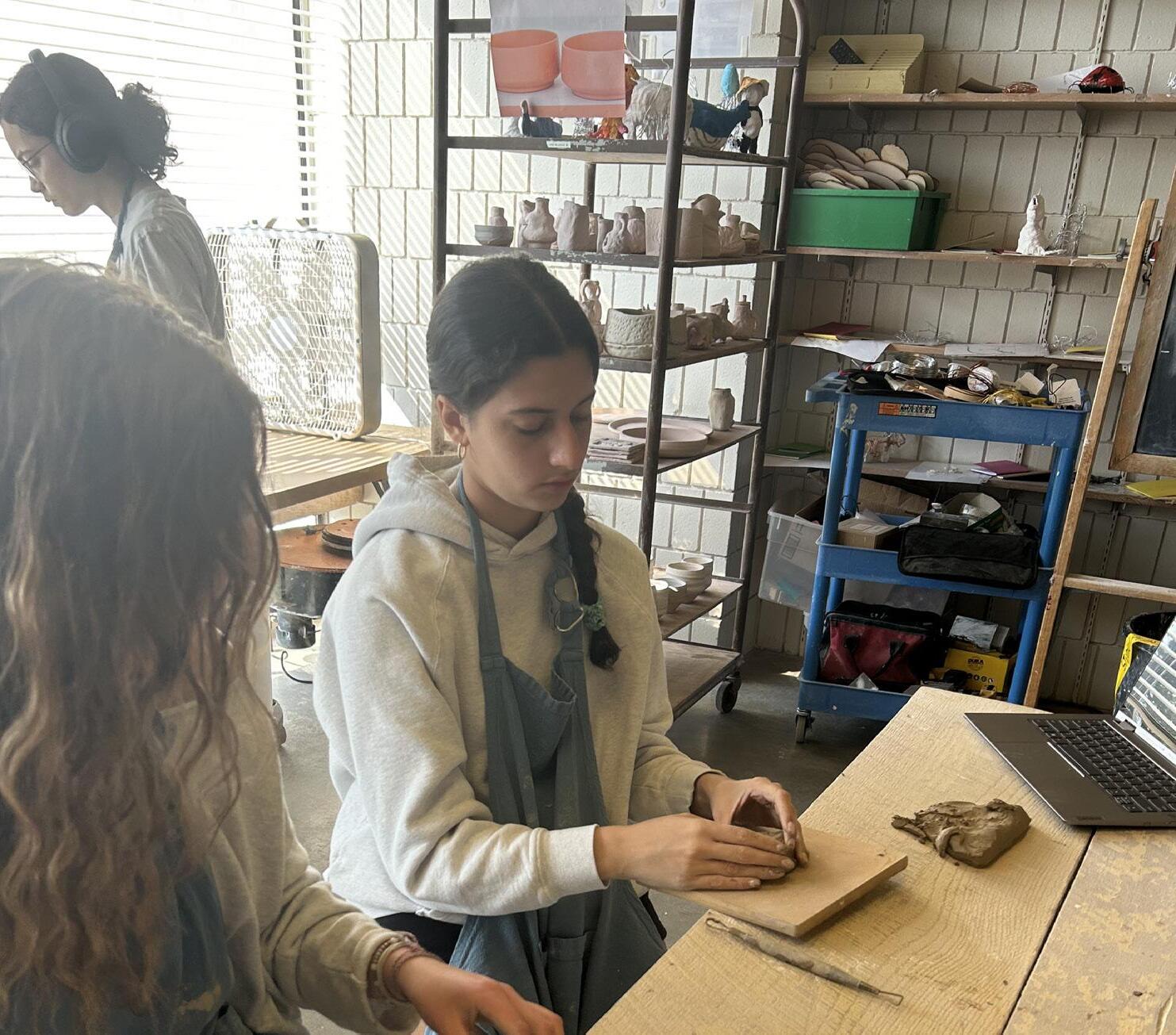
and then [paint] some animals on the outside or other things under the sea,” Deo said.
Lowman said he is using the boxes to prepare the students for juried exhibitions – competitive events in which submitted art is chosen to be displayed at an art show that students are required to enter during the course of the class.
“This is not a juried show, but it’s still practice of getting your work out there to an audience that is not just your class-
room-based audience,” he said.
“The hope is that students begin to feel more confident and a willingness to show their work outside of the context of a classroom environment, and for other students that aren’t in these classes to see what’s happening in our class,” Lowman said.
Lowman envisions locating the display cases somewhere they will be frequently viewed, such as on a corner or near a stand for The Rubicon, to
give the art more traffic.
“This is just like, whenever you’re done [with your art], you can put it in there, and then you can place it wherever you want in the school,” Deo said. “So I feel like if we put [the box] in a place people go more often, then it would get noticed more.” Instead of only going to the Drake gallery to admire art, keep an eye out for Deo and Grande’s immersive underwater design coming soon around school.
It is an often-overlooked truth that being alone doesn’t automatically equate to feeling lonely. Kelly Clarkson knew this in 2012 when she sang the line “doesn’t mean I’m lonely when I’m alone” in her breakup anthem “Stronger (What Doesn’t Kill You).” Coincidentally, since this song came out, young people have experienced a drastic rise in alone time. According to a 2023 report from the U.S. Bureau of Labor Statistics, the daily average of alone time has increased from four hours to six.
Unwillingly spending time alone is different from making that choice. Being excluded or overall social awkwardness sometimes results in loneliness, the unmistakable feel -
ing that something is wrong or missing. However, being alone isn’t necessarily about feeling isolated; it can open the door to relaxation and learning.
When I spend time alone, it’s just my favorite thing ever. “

Encompassing these experiences is solitude, defined as the state of being alone. Solitude can be an empowering, neutral, lonely or positive state, entirely depending on outside factors and one’s general mindset.

Psychologists Netta Wienstein, Thuy-Vy Nguyen and Heather Hansen performed a study in 2023 that focused on the overall effects of alone time on well-being, and they discovered that overall, less stress was reported by anyone spending time alone. Additionally, any negative effects on a participant were reduced if they chose to be alone rather than being forced to by external factors.
One way sophomore Sophia Obi chose to be alone this summer was going on walks almost every day. But now that school has started, “I don’t really have time,” she said. School reduces free time, so finding moments to be alone can become increasingly difficult when trying to balance homework and extracurriculars.
Senior Sona Jain’s experiences with alone time mirror the positive effect on stress. She enjoys relaxing in her room after school, especially in the winter when
she isn’t playing sports.
“I actually get to bingeing some TV shows and movies ... when I spend time alone, it’s just my favorite thing ever,” she said. In Jain’s experience, intention and choice within solitude allow for a balance between alone time and daily life expectations.
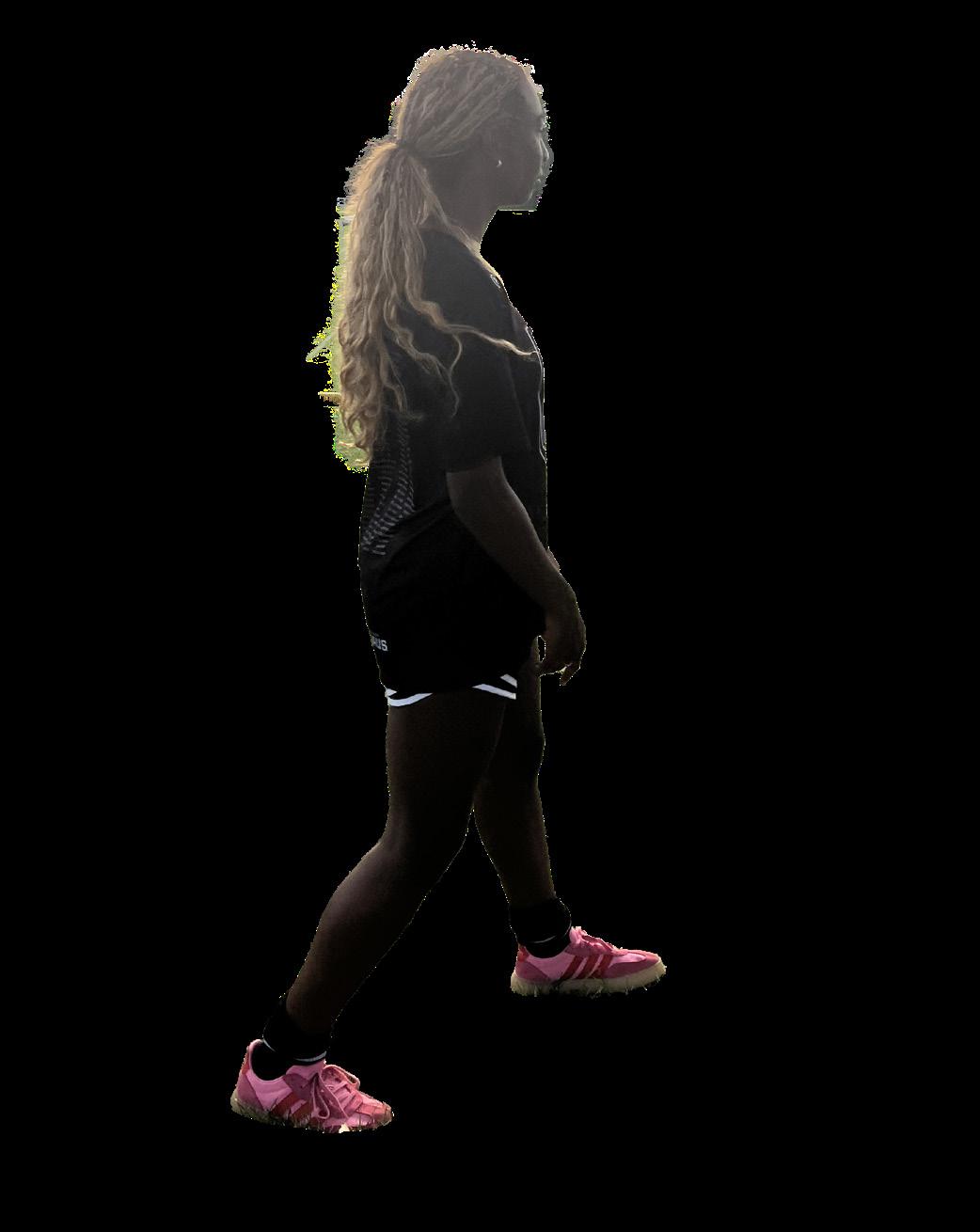
can be helpful to combat this isolation.
In May 2023, U.S. Surgeon General Vivek Murthy declared an epidemic of loneliness. He cited the correlation between loneliness with dementia, depression, anxiety, premature death and more as reasons for broader awareness in the hope of change. Young people are disproportionately affected, so finding ways to
Junior Solomon Beardsley plays single-player video games when his friends are busy, but he still sometimes feels “like there’s no point in doing anything, because there’s no one to do it with,” he said.
Ultimately, the difference between loneliness in solitude is about mindset, intention and circumstance. For students, understanding this distinction is especially important with packed schedules, academic pressure and frequent social engagement. Amid demanding schedules,
intentional alone time often becomes rare or undervalued, but it holds the potential for rest, reflection and self-discovery. In a world that often equates connection with constant interaction, learning to be comfortably alone might be one of the most important steps toward emotional independence.
“ [VIDEO STORY] HOW DO SPA STUDENTS USE THEIR ALONE TIME?
I like to spend my time watching movies and watching anime.


[When I have time alone I spend it] watching TV or being on my phone.


I like to read, play video games, watch movies ... nap.

